
PALESTINE: A LOST HOMELAND
A CENTURY OF STRUGGLE
Why history matters
By: Serena Ferrari (Sissi)
Special thanks to Greens for Palestine group & to Lubna
History didn’t begin on October 7. It’s rooted in Western colonialism.
In 1916, Britain and France secretly carved up the Middle East through the Sykes–Picot Agreement — redrawing borders and dividing peoples who had coexisted for centuries.
The Balfour Declaration and British Mandate turned those lines into policies — paving the way for mass displacement and apartheid. Colonialism never ended. It rebranded — as Zionism backed by Western power and military force.
For 16 years, Gaza has been under siege — the world’s largest open-air prison. Since 2023, the far-right government led by Netanyahu has aggressively advanced its vision — through laws, settlements, and bombardments, with the West watching in silence.
This timeline exposes a century of dispossession and betrayal — Because history matters — and will place our world on trial.
Before 1900 Cultural melting pot
-
Located on the eastern Mediterranean coast, Palestine lies between present-day Lebanon and Egypt, with Syria and Jordan to the north and east. Its position at the junction of Africa, Asia.
Over millennia, Palestine was governed by various empires, including the Egyptians, Assyrians, Persians, Romans, Islamic caliphates, and Ottomans. It was part of larger administrative systems rather than a separate state.
Cities such as Jerusalem, Gaza, Hebron, and Nablus served as important regional centers.
Even though empires ruled from far away, local communities kept their own unique ways of living.
-
Palestine was a crossroads of religion and empire. Its hills, coasts, and deserts saw faiths rise, blend, and endure over centuries.
Under Roman rule, Judaism existed alongside Greco-Roman cults and Zoroastrianism.
Christianity emerged from Jewish roots and spread through the Roman and Byzantine worlds, making Jerusalem a centre of worship.
Islam arrived in the 7th century, bringing new traditions — and recognising Jews and Christians as "People of the Book".
This status gave them protection under Islamic rule.
They were allowed to practise their religions, run their communities, and keep their places of worship. In return, they paid a special tax (jizya) and accepted Muslim authority.
Under this legal framework, Muslims, Christians, Jews, Copts, and others lived side by side, sharing towns, markets, and festivals.
In 1517, the Ottoman Empire took control, ruling Palestine for 400 years. Its multi-faith system, the millet, allowed religious communities to manage their own affairs.
Muslims formed the majority, but cities like Jerusalem, Nablus, Safed, Hebron, Bethlehem, and Gaza were also home to Arab Christians, Armenian clergy, Coptic merchants, and Arab Jews.
These communities shared language, trade, and neighbourhoods.
Jerusalem was divided into religious quarters, and pilgrims came from across the empire:
· Jews from Yemen, Iraq, and Morocco
· Christians from Egypt, Russia, and Europe
· Muslims from across the Islamic world to pray at Al-Aqsa and the Dome of the Rock
By the late 1800s, Palestine’s population remained mostly Arab Muslim, with significant Christian and Jewish minorities.
-
At its height, the Ottoman Empire stretched from North Africa and Arabia to the Balkans and Eastern Europe, ruling Palestine for four centuries.
From the early 1800s, it gradually lost territories to European colonial expansion and internal revolts:
• 1830 - 1881 France colonises Algeria
• 1911 Italy invades Libya (1911).
• 1839 -1899 Britain gains footholds in Aden, Oman, Kuwait, and the GulfMeanwhile, Muhammad Ali of Egypt rises as a semi-autonomous ruler, modernising the region but ultimately forced to submit to British and Ottoman pressure.
-
Muhammad Ali (1769–1849), an Ottoman Albanian commander, rose to power as the de facto ruler of Egypt in 1805.
Though officially serving as governor (Wāli) under the Ottoman Empire, he ruled independently until 1848 and is widely regarded as the founder of modern Egypt.
He launched major reforms to modernise the country: reorganising the economy, building a professional army, centralising administration, and investing in education.
He also developed a textile industry to compete with European imports and sent Egyptians to study abroad.
In 1832, he authorised Antoine Clot (Clot Bey) to open the first School of Medicine for Women in the Middle East, training female doctors (hakimas) to treat women and children.
Muhammad Ali also challenged Ottoman’s imperial control.
On 25 May 1838, he informed Britain and France of his intent to declare Egypt's independence from the Ottoman Empire.
His growing power alarmed European powers.
Under military and diplomatic pressure, he was forced to accept the Convention of London (1840).
This agreement required him to withdraw from most of his conquests and recognise the Sultan’s authority, although he retained hereditary rule over Egypt and Sudan.
This marked the beginning of Egypt’s semi-independent status — a turning point in the region’s early attempts to break from imperial dominance.

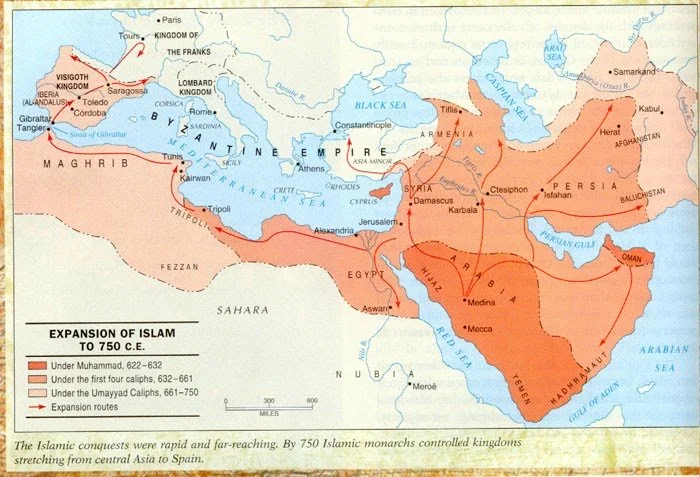

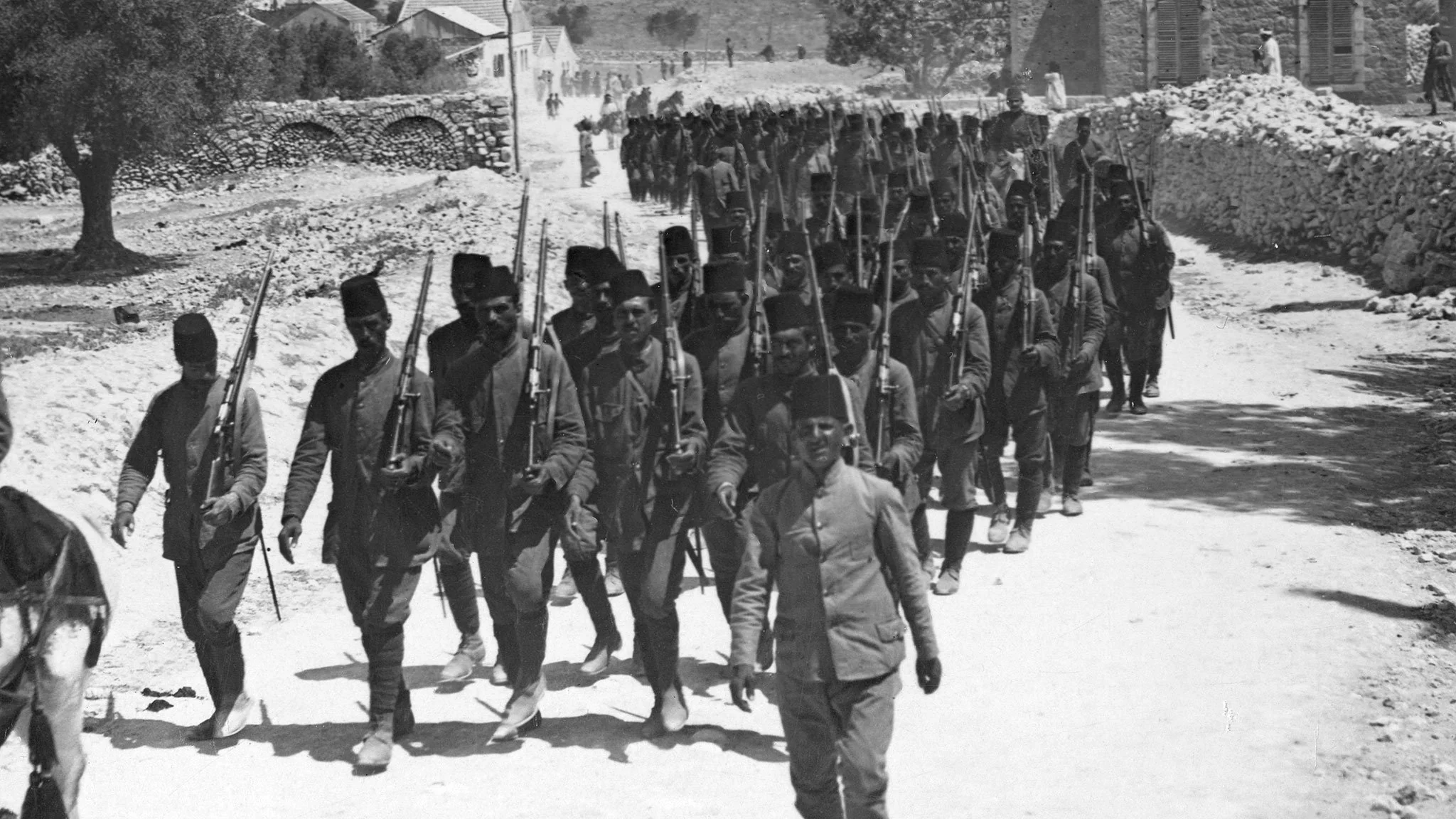


1917–1922 Colonial carve-up
-
Britain, France, and Russia began planning to divide Ottoman lands before the war even ended.
Between November 1915 and May 1916, secret memos were exchanged — mainly between Sir Mark Sykes (Britain) and François Georges-Picot (France) — outlining spheres of influence across the Arab provinces.
On 16 May 1916, Britain and France secretly signed the Sykes–Picot Agreement, with approval from Russian Foreign Minister Sergey Sazonov.
Zones of control were drawn:
· 🇬🇧 Britain: Iraq, Jordan, Palestine
· 🇫🇷 France: Syria, Lebanon
· 🇷🇺 Russia: eastern Anatolia (later withdrawn)
Though later revised, the Sykes–Picot plan became the blueprint for the League of Nations Mandate system (established in 1922).
Under these mandates, Britain and France created the political map that still shapes the Middle East today — and laid the groundwork for the Nakba.
-
In June 1916, Hussein bin Ali, ruler of Mecca in western Arabia, launched the Arab Revolt against the Ottoman Empire.
He acted with support from Britain, which promised Arab independence during World War I.
Britain first backed Hussein’s Hashemite family, who aimed to lead a new Arab state. But after the war, British support shifted to Ibn Saud, leader of the Wahhabi movement.
This shift led to the founding of Saudi Arabia in 1932 and sidelined Hashemite influence in the Arabian Peninsula.
It also shaped Saudi Arabia’s later, often unclear, position on Palestine and Arab nationalism.
-
In November 1917, just days before Britain issued the Balfour Declaration, the Sykes–Picot Agreement was made public — but not by Britain or France.
It was leaked by the Bolsheviks after the Russian Revolution.
When they uncovered secret imperial treaties signed by the former Tsarist government, they published them to expose Western colonial ambitions.
The Sykes–Picot leak revealed how Britain and France planned to divide former Ottoman lands, including Palestine, contradicting promises made to Arab leaders during the war.
At the same time, British Foreign Secretary Arthur Balfour announced support for “a national home for the Jewish people” in Palestine — a land already inhabited by an Arab majority with political aspirations of their own.
These overlapping promises — made in secret and in public — laid the foundations for growing tension in the region and a conflict that continues to this day.
-
After the Ottoman defeat in World War I, European powers moved quickly to formalise their wartime plans.
At the San Remo Conference in April 1920, the League of Nations approved the Mandate system, giving Britain and France legal control over former Ottoman lands.
Mandate Territories:
🇬🇧 Britain: Palestine, Transjordan, Iraq
🇫🇷 France: Syria, Lebanon
The Mandate system gave colonial powers international cover to enforce their interests:
It reflected the secret Sykes–Picot Agreement (1916), which divided the region between Britain and France.
It also incorporated the Balfour Declaration (1917), promising a “national home for the Jewish people” in Palestine.
Though described as "tutelage," these mandates functioned as colonial rule under a new name — with borders drawn in European capitals, not by local populations.
-
Faisal bin Hussein (1885–1933) was charismatic, educated, and politically ambitious. He played a key role in the Arab Revolt against the Ottoman Empire during World War I.
In March 1920, the Syrian National Congress declared him King of Syria.
But France, backed by the secret Sykes–Picot Agreement with Britain, rejected Arab independence.
In July 1920, French forces invaded, defeated Arab troops at the Battle of Maysalun, and took control.
They established the French Mandate for Syria and Lebanon.
Faisal fled Damascus. To protect its influence and calm Arab unrest, Britain offered him a new role.
In 1921, Britain installed Faisal as King of Iraq — a newly created monarchy under British control.
Though presented as Arab-led, the kingdom remained tied to British imperial interests, marking the start of Iraq’s semi-independent rule under the Mandate system.
-
On 24 July 1922, the League of Nations officially granted Britain the Mandate to govern Palestine.
Embedded in that mandate? The Balfour Declaration.
Now, Britain wasn’t just making promises — it was in charge.
But during the war, Britain had made three conflicting promises:
🇫🇷 To France — Sykes–Picot Agreement (1916): a secret deal to divide the Ottoman Empire; Palestine was meant to be placed under international administration, not full British control.
🕌 To Arab leaders — Hussein–McMahon Correspondence (1915–1916) vague promises of Arab independence, including Palestine, in exchange for support against the Ottomans.
🇬🇧✡️ To the Zionist movement — Balfour Declaration (1917) public support for a Jewish national home in Palestine.
These overlapping promises set the stage for growing tension — and the roots of a conflict that remains unresolved.






1923-1939 Mandate implements Britain’s Zionist promise
-
On 29 September 1923, the Mandate for Palestine officially came into force, granting Britain full administrative control over the territory under the League of Nations.
The mandate, based on the Balfour Declaration, committed Britain to support the creation of a “national home for the Jewish people” — without consulting the Arab majority, who had long inhabited the land.
With British rule formalised:
Jewish immigration increased, backed by European Zionist organisations.
Tensions rose as many Palestinian Arabs saw their political rights dismissed and land increasingly sold or transferred without their consent.
This marked the beginning of a new phase of British colonial rule, where immigration, land policy, and political exclusion set the stage for future unrest.
-
Between 1936 and 1939, Palestinian Arabs launched a nationwide revolt — the largest and most sustained uprising against British colonial rule in Palestine.
Years of rising frustration over mass Jewish immigration, land dispossession, and the denial of political rights boiled over into a full-scale rebellion.
Palestinians demanded:
An end to British rule
A halt to Jewish immigration
National independence and self-determination
The revolt included:
🇵🇸 Strikes and civil disobedience
🇵🇸 Riots, armed resistance, and ambushes
🇵🇸 Attacks on British forces and Zionist settlements
Britain, caught between its conflicting promises to Jews and Arabs, responded with force — deploying tens of thousands of troops, demolishing homes, disbanding Palestinian political groups, and arresting or exiling leaders.
-
The revolt was a turning point in Palestinian resistance. It showed the depth of national consciousness and the demand for independence — not just opposition to Zionism, but a broader anti-colonial movement.
But the cost was high:
The failure of the revolt left Palestinians politically fragmented and militarily weakened.
British repression dismantled key leadership structures.
This would leave Palestinians vulnerable in the face of the 1947–1949 war, the Nakba, and the permanent reshaping of the land.
-
1. Political Leadership
Haj Amin al-Husseini, Grand Mufti of Jerusalem, was the most visible nationalist leader.
The Arab Higher Committee (AHC), formed in 1936, coordinated political demands before being banned by Britain in 1937.
2. Rural guerrilla fighters
Thousands of fellaheen (peasants) formed armed groups — known as fasa'il — attacking British and Zionist targets.
3. Urban support networks
City-based Palestinians led strikes, boycotts, and mass protests.
The 1936 General Strike lasted six months — one of the longest anti-colonial strikes in modern history.
4. Limited external support
Some volunteers and weapons came from Syria, Iraq, and Lebanon, but no Arab government gave formal backing.
-
In response to the Palestinian Revolt, Britain established the Peel Commission in 1937 to investigate the unrest and propose solutions.
To address the uprising, the Commission recommended:
🇵🇸 The first partition of Palestine into separate Arab and Jewish states
🚫 Transfer of Arab populations from Jewish-designated areas — suggesting separation through forced displacement
This was the first official proposal of partition and population transfer — a policy shift that introduced the idea of removing communities to enforce political goals.
It marked a chilling prelude to the displacement that would follow in the 1947–1949 war.
-
Under pressure from the Arab Revolt and growing instability in the region, Britain reversed course on its earlier commitments.
The 1939 White Paper marked a major shift in British policy:
Jewish immigration capped at 75,000 over five years — any further immigration would require Arab approval
Jewish land purchases restricted in much of Palestine
A plan for an independent Palestine within 10 years, to be governed jointly by Arabs and Jews
Zionist leaders viewed the White Paper as a betrayal, especially as Nazi persecution in Europe escalated.
For Palestinian Arabs, it was a partial political win — but it came too late, and trust in Britain was already broken.



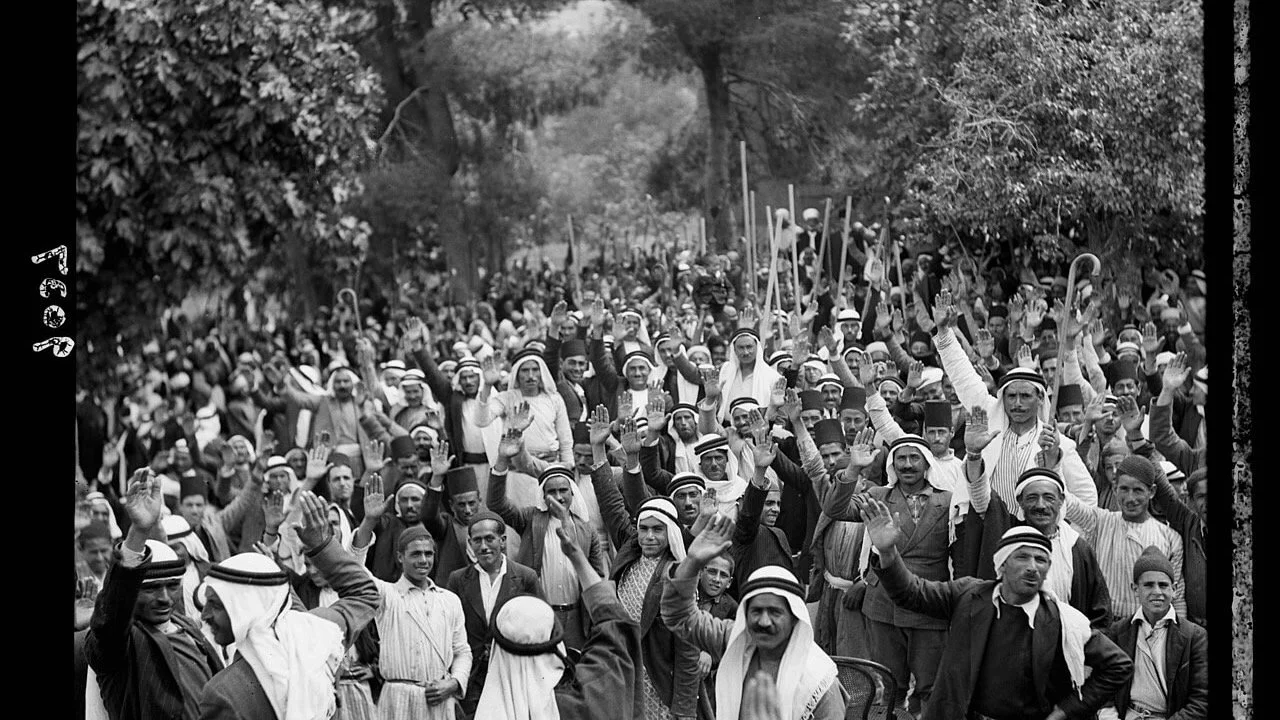



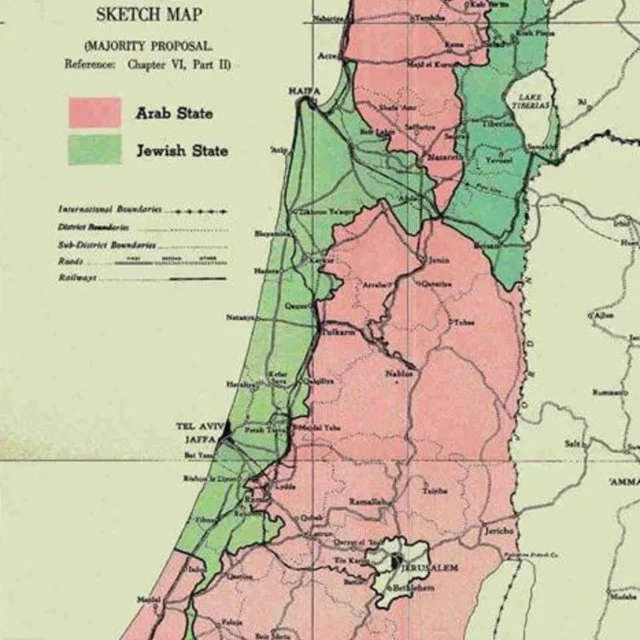
1939–1947 Zionist surge
-
After Britain crushed the Arab Revolt (1936–1939), Palestinian political leadership collapsed.
Key leaders were:
Exiled
Imprisoned
Silenced or banned from public life
No unified leadership emerged to take their place.
Meanwhile, Britain’s shifting policies and Zionist diplomacy abroad left Palestinians politically disarmed — excluded from international decisions about their own future.
The Arab World Watched — But Didn’t Act
🇪🇬 Egypt avoided confrontation, wary of harming ties with Britain
🇯🇴 Transjordan’s King Abdullah eyed territorial control, not liberation
🇸🇦 Saudi Arabia focused on internal consolidation
🇮🇶 🇸🇾 Iraq and Syria gave speeches, but no military support
By 1947, Palestinians faced a turning point:
Fragmented
Outnumbered
Isolated on the global stage
As the United Nations prepared to decide Palestine’s future, Palestinians stood without a state, without allies — and without the political power to shape what came next.
-
Between 1941 and 1945, the Holocaust unfolded across Nazi-occupied Europe, leading to the murder of six million Jews.
As the scale of the genocide became known, global sympathy for Jewish survivors surged — particularly in Western countries.
Calls for a Jewish state in Palestine intensified.
Zionist leaders used this momentum to press for international backing — especially from Britain and the United States.
For Palestinians, this meant rising external pressure without representation — their leadership dismantled, their voices excluded..
-
29 November 1947 — The UN General Assembly adopted Resolution 181, proposing the partition of Palestine into two states:
🇮🇱 Jewish state: 56% of the land
🇵🇸 Arab state: 43% of the land
🕊 Jerusalem: placed under international administration
At the time:
Jews made up about one-third of the population
Jews owned less than 7% of the land
Palestinian Arabs rejected the plan, seeing it as unjust and imposed without consent.
Jewish leaders accepted it as a diplomatic step toward statehood.Civil war broke out immediately in Mandatory Palestine.
1948 Naqba begins
-
As Britain prepared to leave Palestine, the Haganah (main Jewish militia) issued Plan Dalet (Plan D) — a military blueprint to occupy strategic areas across the country.
The goal was to:
Take control of key territory ahead of British withdrawal securing key roads, towns, and villages
Expanding territorial control beyond the UN-designated borders
Ensuring a Jewish majority in the proposed state
March 1948: Plan Dalet marked the shift from defensive operations to a strategy of territorial control and pre-emptive occupation.
The plan was seen by Palestinians as the start of a coordinated campaign to displace communities and reshape the map before the state of Israel was declared.
-
On 9 April 1948, the Zionist paramilitary groups Irgun and Lehi attacked the Palestinian village of Deir Yassin, near Jerusalem.
Over 100 civilians were killed, including women, children, and the elderly
Eyewitnesses reported executions and atrocities
The attack sparked mass panic across Palestine
Word spread fast: Leave or die.
This moment triggered mass flight — entire communities fled their homes in fear.
It marked the beginning of the Nakba — “the Catastrophe.”
-
On 14 May 1948, as Britain ended its mandate, the State of Israel was officially declared.
The next day — 15 May — neighbouring Arab armies entered, triggering the interstate phase of the 1948 Arab–Israeli War.Israeli offensives followed quickly:
July 1948: Lydda and Ramle were captured — over 50,000 Palestinians were expelled or fled
October 1948: Operation Hiram forced out Palestinian communities in the north
These offensives cemented control over large parts of historic Palestine, deepening the ongoing Nakba.
-
After the State of Israel was declared on 14 May 1948, armies from Egypt, Jordan, Syria, Lebanon, and Iraq entered Palestine, marking the beginning of the Arab–Israeli War.
Their aim was to prevent the partition of Palestine and support the displaced and embattled Palestinian population.
But the Arab forces were:
Poorly coordinated
Unequally equipped
Divided by competing national interests
Meanwhile, Israeli forces, organized and battle-tested from months of civil conflict, launched a series of military offensives that expanded control well beyond the areas allocated under the UN Partition Plan.
The war intensified the Nakba — the mass displacement of Palestinians:
July 1948: Israeli forces captured Lydda and Ramle — more than 50,000 Palestinians were expelled or fled
October 1948: Operation Hiram cleared northern Palestine of its remaining Palestinian communities
In many areas, military offensives were accompanied by expulsions, destruction, or fear-driven flight
By the end of 1948, much of Palestine’s Arab population had been uprooted, with no path to return.
-
By the end of 1948:
Over 750,000 Palestinians had fled or were expelled
More than 400 towns and villages were destroyed or depopulated
An estimated 10,000–15,000 Palestinians were killed, many of them civilians
Entire families were separated — never to return
Homes, lands, and archives were erased or seized
The Nakba was not a spontaneous event.
It was the result of coordinated expulsions, military offensives, and widespread fear.
It remains a foundational trauma in Palestinian history.





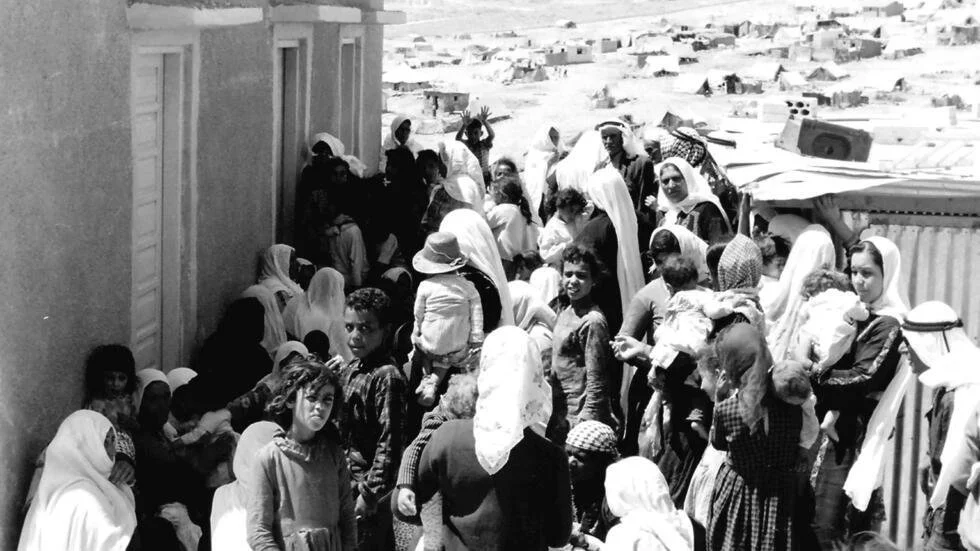





1948–1966 Military rule over Palestinians
-
After the State of Israel was established in 1948, around 150,000 Palestinians remained within its new borders — a fraction of the more than 750,000 who had lived there before the Nakba.
They were eventually granted Israeli citizenship, but citizenship did not mean equality.
From 1948 to 1966, Palestinian citizens lived under military rule — a separate legal system that restricted their movement, political rights, and access to land.
They needed permits to travel, faced curfews, censorship, surveillance, and widespread land confiscation.
This system was enforced through the Emergency Regulations of 1945, a set of British colonial laws originally used to suppress resistance — later adopted by Israel to control its Palestinian population during the early years of the state.
-
The Israeli government justified military rule over Palestinian citizens as a security measure.
Restricted Movement
Palestinians needed military permits to work, study, or even visit nearby towns.
This affected education, employment, and family life.Land Confiscation
Under the Absentees’ Property Law and other legal tools, Israel expropriated around 70–80% of land owned by Palestinian citizens.
New Jewish settlements were built on or near depopulated Arab villages.Political Repression
Political organizing was heavily monitored or banned.
Leaders seen as "subversive" could be detained without trial, silenced, or removed from positions of influence.Economic Marginalisation
Most Palestinian areas received very limited state investment, infrastructure, or development —
creating a system of economic dependency and long-term underdevelopment.
What was the real purpose?
Though framed as temporary and necessary for security, military rule functioned as a system of control.
It helped the state to:Control land and population
Prevent political mobilisation
Solidify Jewish demographic and territorial dominance
-
Military rule over Palestinian citizens created a two-tier system of citizenship.
It was officially lifted in December 1966, just months before the 1967 war — but the structural inequalities never fully disappeared.Land inequality, underdevelopment, and systemic discrimination
Security laws and policing tactics especially in East Jerusalem, the Galilee, and during periods of unrest
-
After the 1948 war, the new State of Israel began building the institutions of a modern state —and also began building something else: a legal system that would redefine who belonged, who owned the land, and who didn’t.
Passed on 14 March 1950, the Absentees’ Property Law transferred control of land, homes, and businesses left behind by Palestinians during the 1948 war to the state’s Custodian of Absentee Property.
Key points:
Anyone who left their home after 29 November 1947, even briefly or due to fear, could be declared an “absentee.”
Many Palestinians remained inside the new borders of Israel but were displaced from their towns — they became known as “present absentees.”
Their property was seized and could be sold, leased, or reallocated by the state — without the right of return or compensation.
This law affected hundreds of thousands of Palestinians and laid the foundation for large-scale land redistribution to Jewish immigrants and state institutions.
-
That same year, a very different law was passed: the Law of Return.
Passed on 5 July 1950, the Law of Return granted all Jews — regardless of origin — the right to immigrate to Israel and immediately receive citizenship.It enshrined the Zionist principle that Israel was the homeland of all Jews, including those with no personal connection to the land, while Palestinian refugees were denied the right to return to homes they had lived in for generations.
-
On 1 April 1952, the Citizenship Law, formally defining who would be considered an Israeli national.
Many Palestinians who remained inside Israel during the war were initially excluded from citizenship — despite being born in the territory. They were required to apply and prove continuous residence, often a near-impossible task after displacement.
Key points:
Citizenship was not automatic for non-Jews.
It was granted later to some Palestinians through amendments and court petitions.
Even after receiving citizenship, Palestinians in Israel faced systematic discrimination, limited access to land, and restrictions in civil rights — many of which remain today.
-
Together, these laws:
Redefined property rights, stripping Palestinians of land
Codified Jewish return and settlement as a legal right
Marginalised Palestinians, even those who remained inside Israel, through legal ambiguity and dispossession
Created a dual legal system — one privileging Jewish citizens, the other limiting the rights of Palestinian citizens and ignoring the rights of refugees outside Israel
1950-1952 Property and Citizenship under Israel’s new legal architecture
1956–1967 From Suez to 6-day war
-
For decades, the Suez Canal — a vital trade route between Europe and Asia — was controlled by British and French powers, despite running through Egyptian territory.
Egypt saw little profit, while foreign shareholders reaped the benefits.In July 1956, Egyptian President Gamal Abdel Nasser nationalised the Suez Canal, asserting control over Egypt’s own resources and challenging European dominance.
In October 1956, Israel, Britain, and France launched a coordinated military attack on Egypt, aiming to remove Nasser and regain Western control over the canal.
For Palestinians — especially refugees and those still under military rule inside Israel — Egypt’s bold move raised hopes.
Would Arab strength finally challenge colonial influence and shift the balance?But the crisis ended under U.S. and Soviet pressure, forcing a withdrawal.
The outcome:Egypt retained control of the canal
Israel withdrew from the Sinai
Palestinian hopes of meaningful regional change were once again deferred
The Suez Crisis exposed the waning power of old colonial empires, but also revealed the limits of Arab unity.
-
On 5 June 1967, Israel launched a coordinated military assault on Egypt, Syria, and Jordan — beginning what became known as the Six-Day War.
In less than a week, Israel had occupied:
The West Bank and East Jerusalem from Jordan
The Golan Heights from Syria
The Gaza Strip and Sinai Peninsula from Egypt
For Palestinians, the consequences were devastating:
280,000–325,000 Palestinians were displaced — many for the second time since 1948
The West Bank, Gaza, and East Jerusalem came under Israeli military occupation
Jerusalem was annexed, and the construction of Israeli settlements began
The victory reshaped the region and marked the beginning of a new era of occupation.
-
In response to Israel’s territorial expansion during the 1967 war, the United Nations Security Council passed Resolution 242 on 22 November 1967.
It called for:
Israel’s withdrawal from territories occupied during the war
Recognition of the sovereignty, territorial integrity, and political independence of all states in the region
A just solution to the Palestinian refugee problem
The resolution was ambiguous. It did not mention Palestinians by name, nor their right to self-determination.
But a new phase was about to begin — one born not in state capitals, but in refugee camps, border zones, and exile
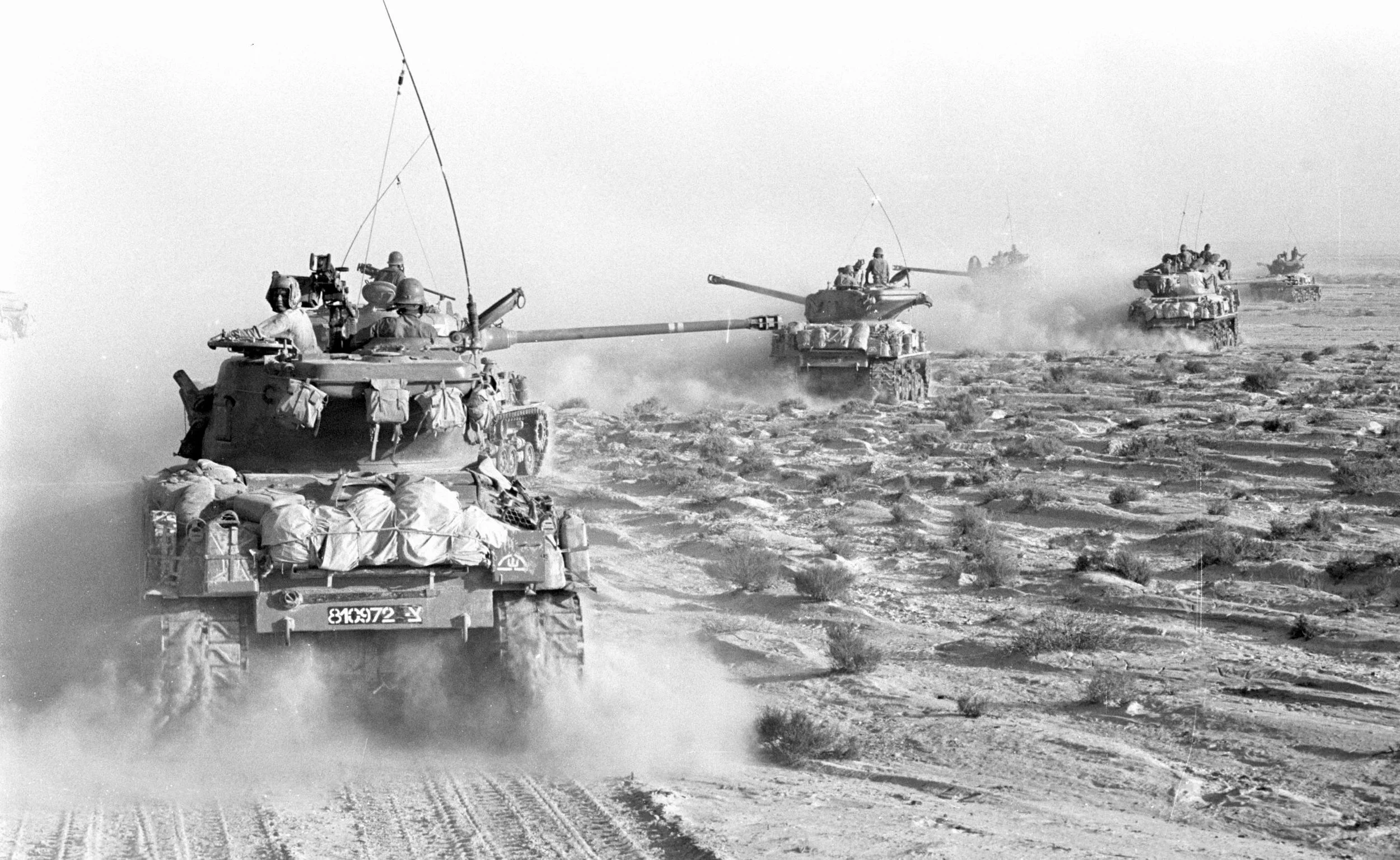
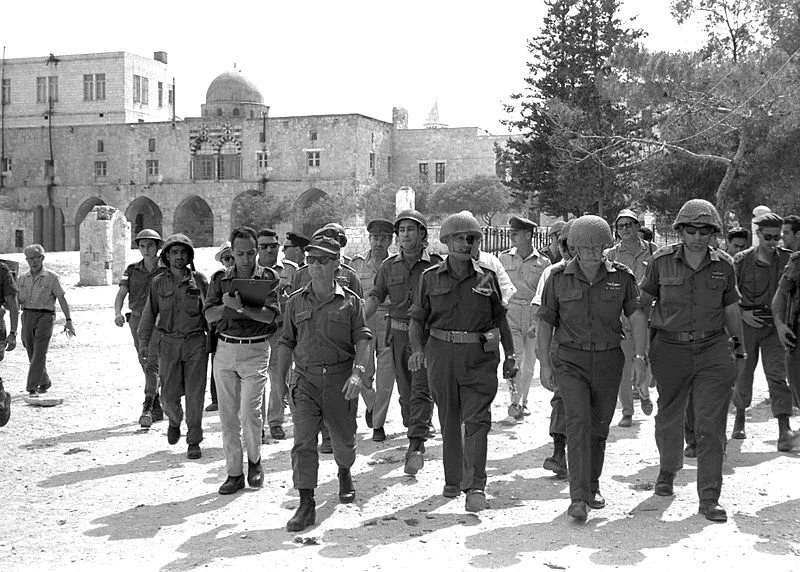

-
A new phase of Palestinian political organisation was taking shape.
In 1968, Yasser Arafat’s Fatah movement took leadership of the Palestine Liberation Organization (PLO).
Under Arafat’s leadership, the PLO:
Became the main representative of the Palestinian people.
Reframed the Palestinian cause as a national liberation struggle.
Gained growing support across refugee camps, the diaspora, and occupied territories.
For many Palestinians, the PLO became the first entity to speak in their name outside the frameworks imposed by Arab states or international diplomacy.
The PLO asserted that Palestinians were not just refugees — they were a people with a right to return and to resist.
-
By 1970, the PLO had become a powerful political and military force inside Jordan, operating from refugee camps and border regions.
As tensions escalated between Palestinian fighters and the Jordanian monarchy, King Hussein launched a brutal crackdown.
This led to Black September — a civil war between the Jordanian army and Palestinian factions, leaving thousands dead, most of them Palestinians. -
After months of fighting, Jordan defeated the PLO militarily.
By mid-1971, Palestinian fighters and leadership were expelled from Jordan entirely.The PLO relocated to Lebanon, shifting the base of the armed Palestinian movement — and setting the stage for future conflicts in South Lebanon.
-
On 6 October 1973, Egypt and Syria launched a surprise assault on Israel during Yom Kippur and the 10th day of Ramadan — days of deep religious significance for Jews and Muslims alike.
The attack was timed to catch Israel off guard.
For Egypt and Syria, it was a fight to reclaim land lost in 1967. It shook the myth of Israeli invincibility after 1967.
For Palestinians, it sparked hope — but brought no change on the ground.The PLO remained sidelined.
Palestinian territories stayed under Israeli occupation.
1968–1973 The (PLO) & Ramadan War
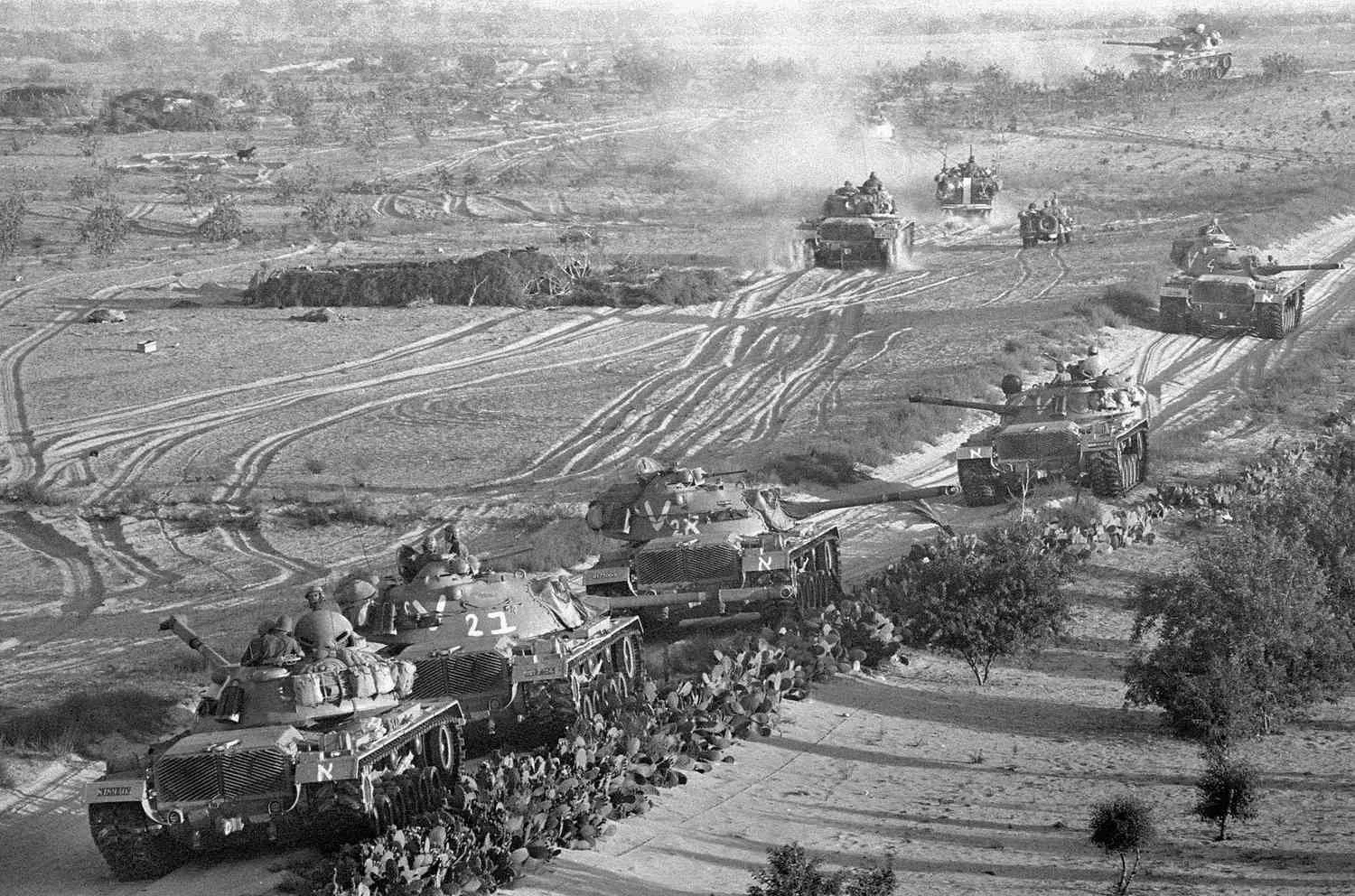








1982–1993 Sabra & Shatila - First Intifada
-
After invading Lebanon to expel the PLO, the Israel Defense Forces (IDF) surrounded West Beirut. The PLO was forced to evacuate to Tunisia.
Between 16–18 September, Lebanese Phalangist militias entered the Palestinian refugee camps of Sabra and Shatilaand massacred over 1,000 civilians — including women, children, and the elderly.
The IDF controlled the area and fired flares at night, illuminating the camps as the killings took place.
They allowed the militias to enter and did nothing to stop the massacre.The UN General Assembly condemned it as an act of genocide.
In response, Israel launched the Kahan Commission, which found the IDF indirectly responsible and held Defence Minister Ariel Sharon personally accountable. He was forced to resign.The massacre shocked global opinion.
The PLO was now in exile, and the Palestinian struggle began shifting from armed resistance to diplomatic mobilisation. -
In December 1987, a grassroots Palestinian uprising — the First Intifada — erupted across Gaza, the West Bank, and East Jerusalem.
It was led not by exiled leaders, but by local youth, students, workers, and communities under occupation.Over 1,500 Palestinians killed by Israeli forces
Tens of thousands injured
Thousands arrested or detained without trial
Many children and teenagers were among the casualties
Reports of widespread beatings, home demolitions, and curfews
During this time, Hamas was founded as a new Islamic political force, distinct from the secular PLO.
This was a turning point: for the first time since 1967, Palestinians living under occupation reclaimed the struggle, shifting attention from exile to the streets.
-
On 15 November 1988, during a meeting in Algiers, the Palestine Liberation Organization (PLO) formally declared an independent Palestinian state.
The declaration was symbolic — but it marked a major political shift.
For the first time, the PLO accepted UN Resolutions 242 and 338, implicitly recognising Israel’s right to exist in exchange for a state of their own.More than 70 countries quickly recognised the new State of Palestine.
But Israel rejected the declaration, and the U.S. maintained its position that the PLO must first recognise Israel and renounce violence.This moment signalled the PLO’s transition from armed liberation movement to a diplomatic representative of the Palestinian people — laying the groundwork for future negotiations.
-
The Palestine Liberation Organization (PLO) — the internationally recognised representative of the Palestinian people — signed the Oslo Accords with Israel in 1993.
The agreement promised limited Palestinian self-rule in parts of the Gaza Strip and West Bank.🔻 But critical issues were left unresolved:
Israeli occupation continued
Settlements expanded
No recognition of the right of return
It offered autonomy without sovereignty — and trust eroded quickly.


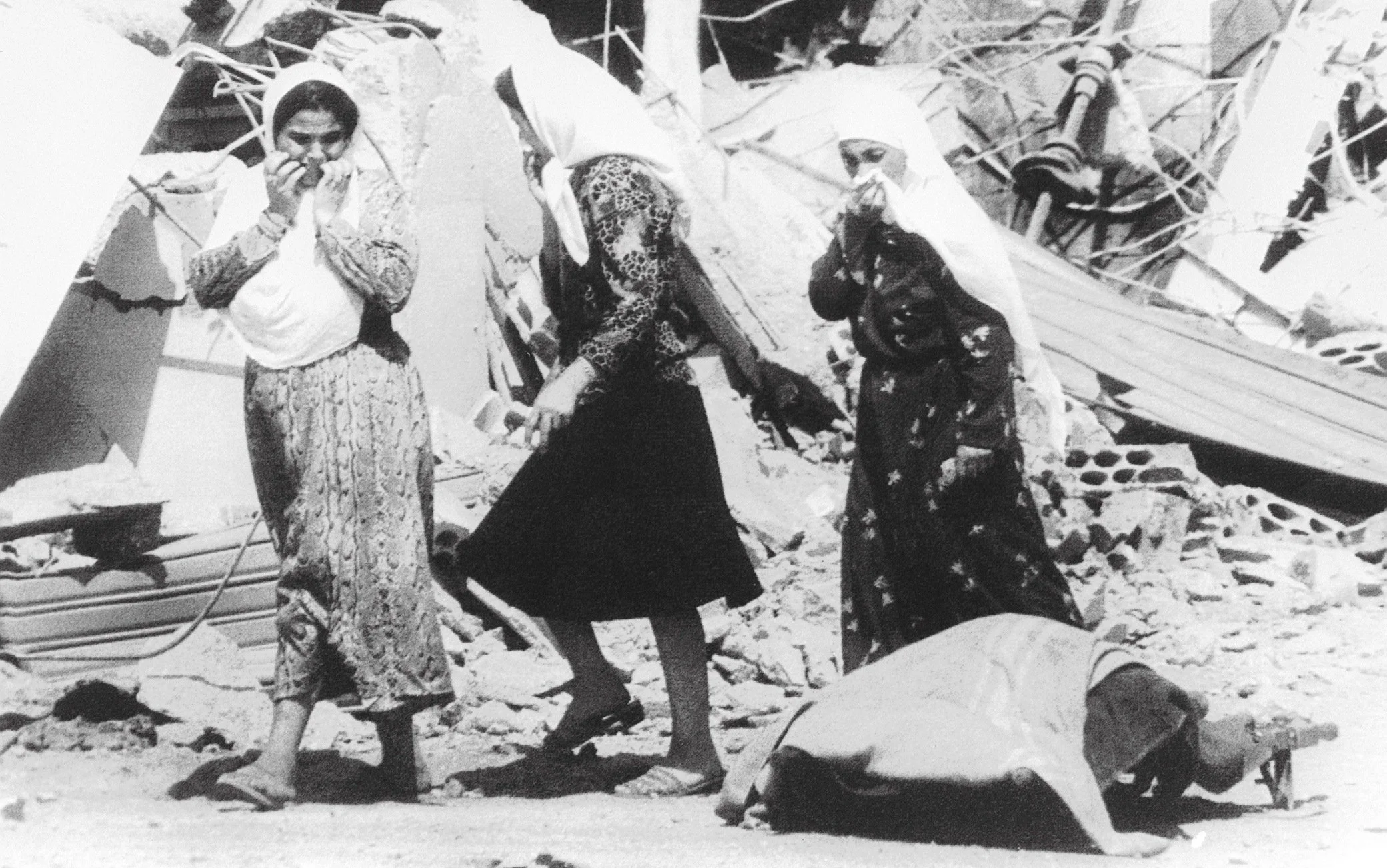


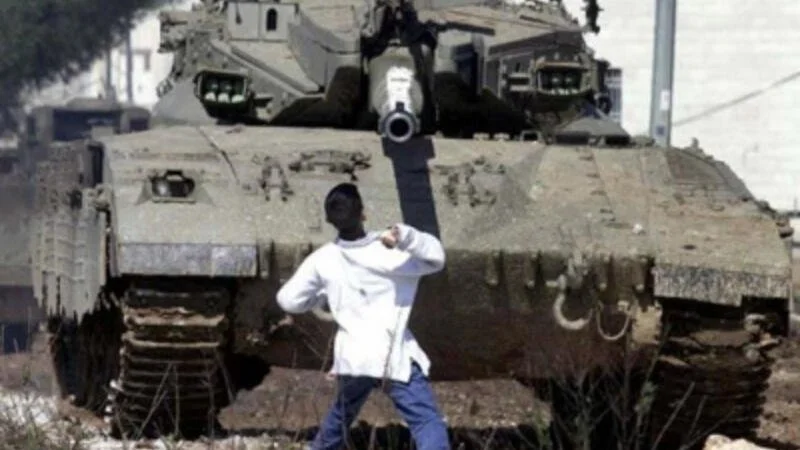


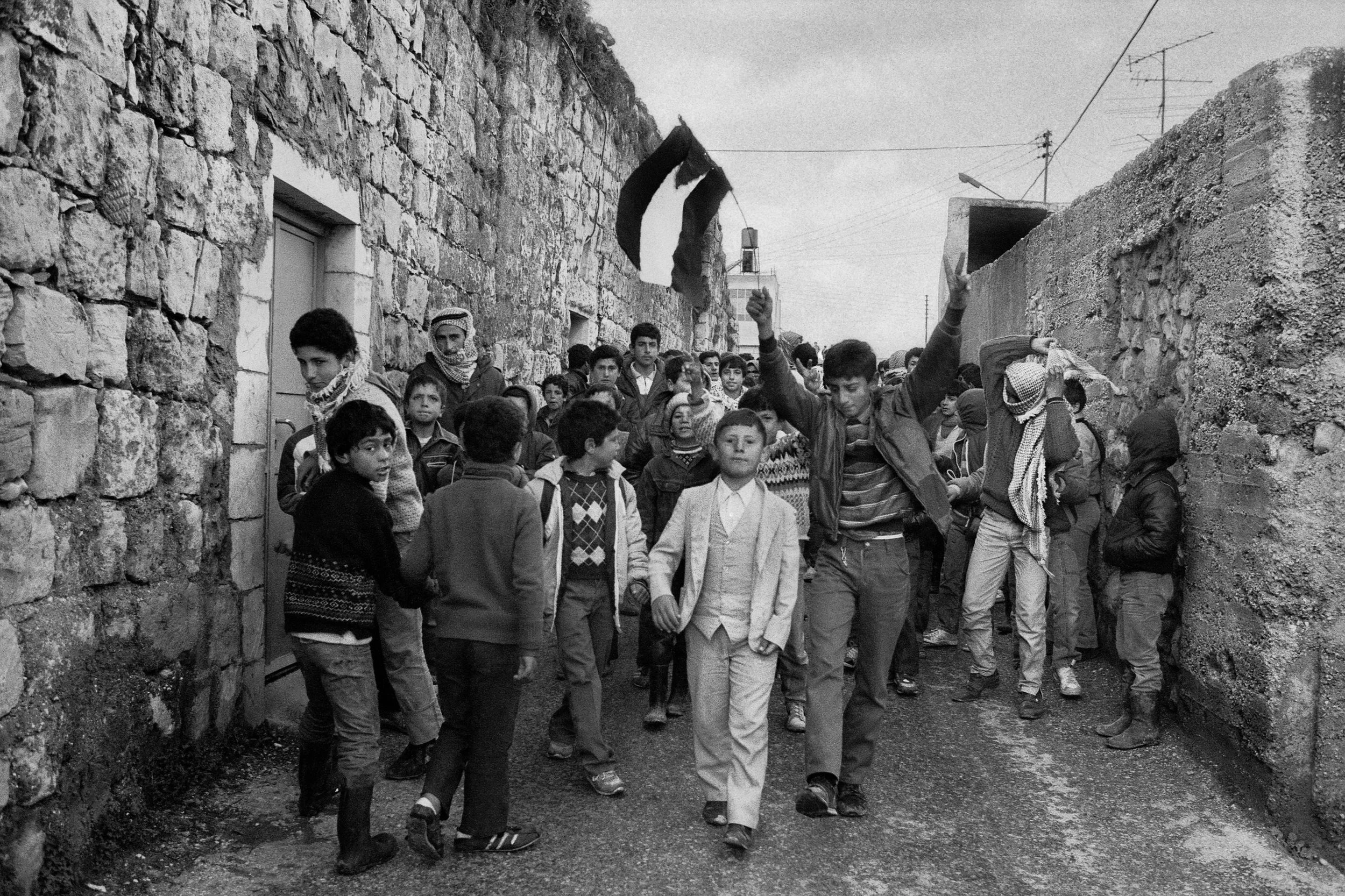
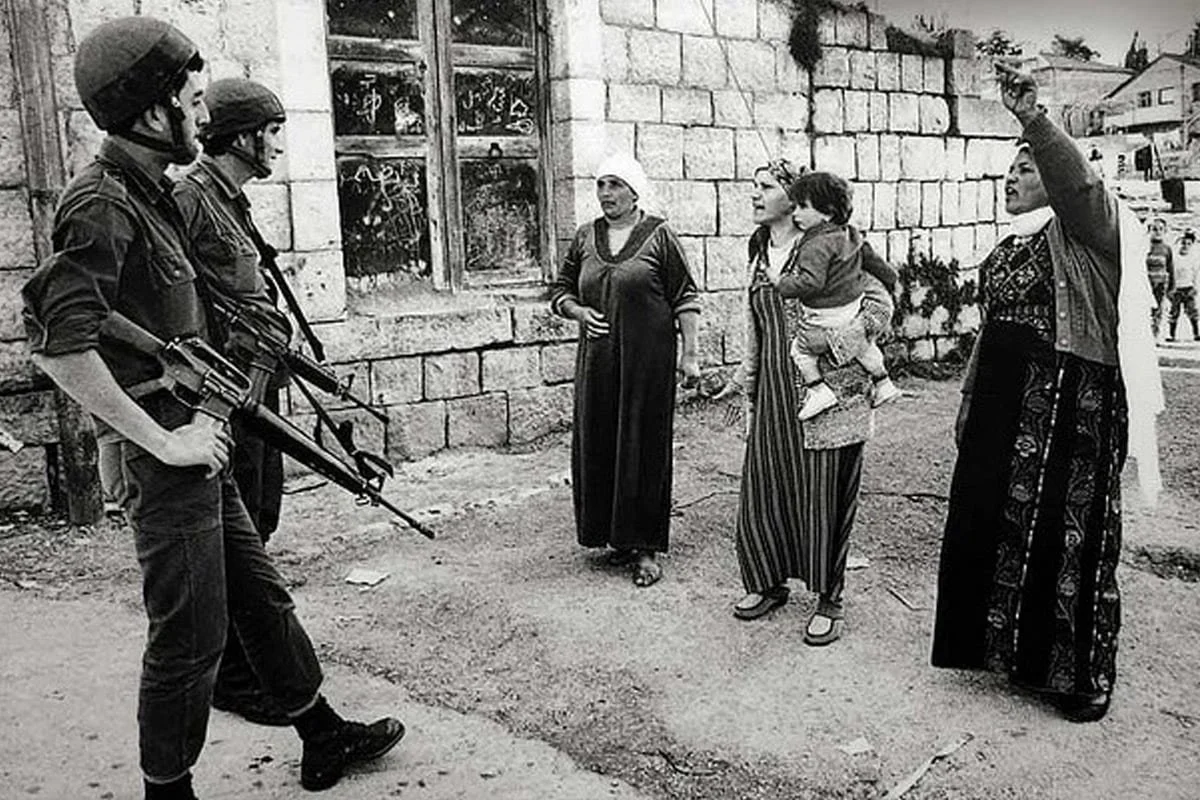
-
In 1994, Yasser Arafat returned from exile as the Palestinian Authority (PA) was established under the Oslo Accords.
The PA took limited control over parts of Gaza and the West Bank, while Israel retained full authority over borders, airspace, security, and land use.
In 1995, the Oslo II Agreement divided the West Bank into Areas A, B, and C
— leaving 60% under full Israeli control (Area C) and breaking Palestinian territory into isolated zones.
That same year, Israeli Prime Minister Yitzhak Rabin was assassinated by a Jewish extremist who opposed the peace process.
It was more than a single act of violence — it signalled the rise of the Israeli far-right, which would grow into a dominant political force. The impact is still unfolding today. -
Palestinians voted for the first time. Arafat became PA President. A new Legislative Council was formed.
But the vote took place under occupation. Israel still controlled land, borders, and movement.
East Jerusalem voters faced restrictions. It was a symbolic step, not real sovereignty. -
In July 2000, U.S. President Bill Clinton hosted final-status talks between Yasser Arafat and Israeli Prime Minister Ehud Barak at Camp David.
It was the first time Palestinian and Israeli leaders formally negotiated core issues:
➡️ Jerusalem
➡️ Refugees
➡️ Borders
➡️ SettlementsBut the talks ended without agreement. Israel blamed Arafat for rejecting a deal.
Palestinians said the offer fell far short — no full sovereignty, no solution for refugees, and no end to occupation.The failure triggered widespread frustration — setting the stage for the Second Intifada, just months later.
1994–2000 Expansion continues - Camp David talks fail



-
On 28 September 2000, Israeli opposition leader Ariel Sharon entered the Al-Aqsa Mosque compound with a large security escort — a move widely seen by Palestinians as a deliberate provocation.
The next day, protests erupted across East Jerusalem, the West Bank, and Gaza.
Israeli forces opened fire.
The uprising quickly spread.Known as the Second Intifada, this was not just protest — it was an explosion of anger after years of failed peace, deepening occupation, and expanding settlements.
➡️ Over five years, more than 3,000 Palestinians and 1,000 Israelis were killed.
➡️ The uprising marked the collapse of Oslo and the return to daily military violence. -
As attacks increased inside Israel, the Israeli government launched Operation Defensive Shield, the largest military assault in the West Bank since 1967.
Cities like Jenin, Nablus, Ramallah, and others were invaded and placed under curfew.
The PA’s infrastructure was destroyed.
Entire towns were sealed off.That same year, Israel began building the Separation Wall — not along the Green Line, but deep inside the West Bank.
➡️ It isolated East Jerusalem, annexed Palestinian land, and separated families, farms, and communities.
➡️ Israel called it a “security barrier.”
Palestinians called it a land grab in concrete.In 2004, the International Court of Justice ruled the wall illegal, but construction continued.
-
After five years of violence, the Second Intifada gradually came to an end in 2005 — not through peace, but through exhaustion. In February 2005, a ceasefire was declared at the Sharm El-Sheikh.
Over 3,000 Palestinians and 1,000 Israelis were killed.
Thousands displaced
The West Bank reoccupied, Gaza isolated
The Separation Wall expanded
In August, Israel withdrew from Gaza — unilaterally. Gaza was no longer occupied from within, but fully sealed from outside.
The violence slowed, but the occupation deepened and changed form. -
Palestinians stood increasingly alone. Across the region, former champions had stepped back:
Egypt: Normalised ties with Israel and sealed the Rafah border crossing
Jordan: Signed a peace treaty with Israel in 1994
Lebanon: Devastated by civil war and Israeli invasions
Syria: Engulfed in civil war from 2011 onward
Gulf States: Pursued trade with Israel, culminating in the Abraham Accords (2020)
For much of the Arab world, Palestine was not a priority.
2000-2005 Second Intifada - 3,000 Palestinians killed
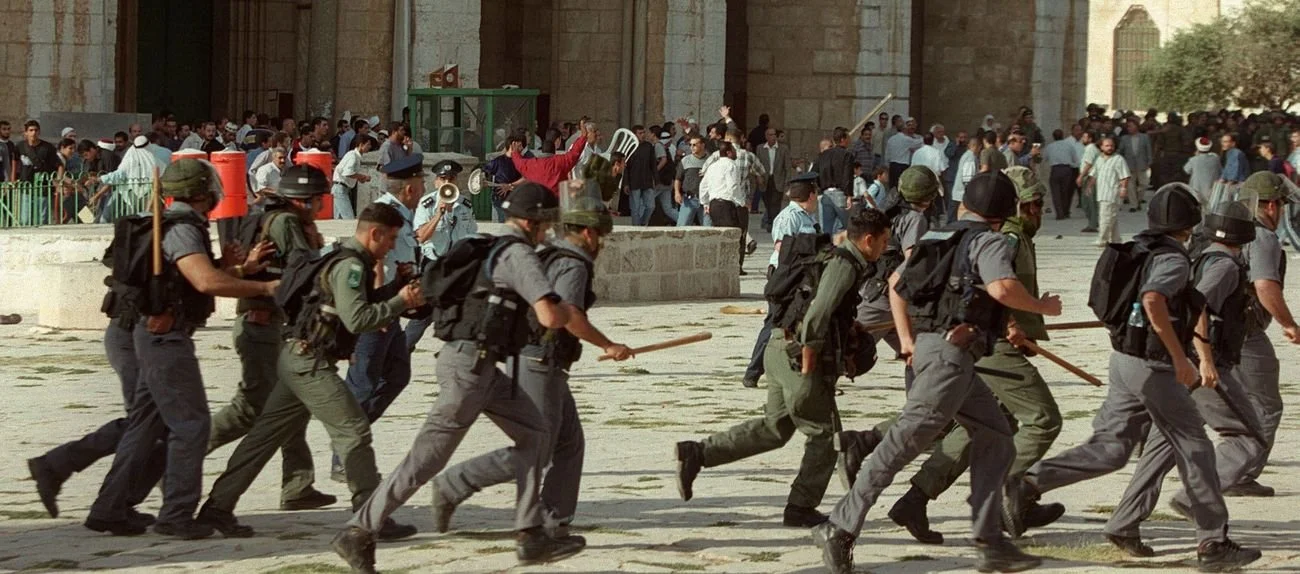



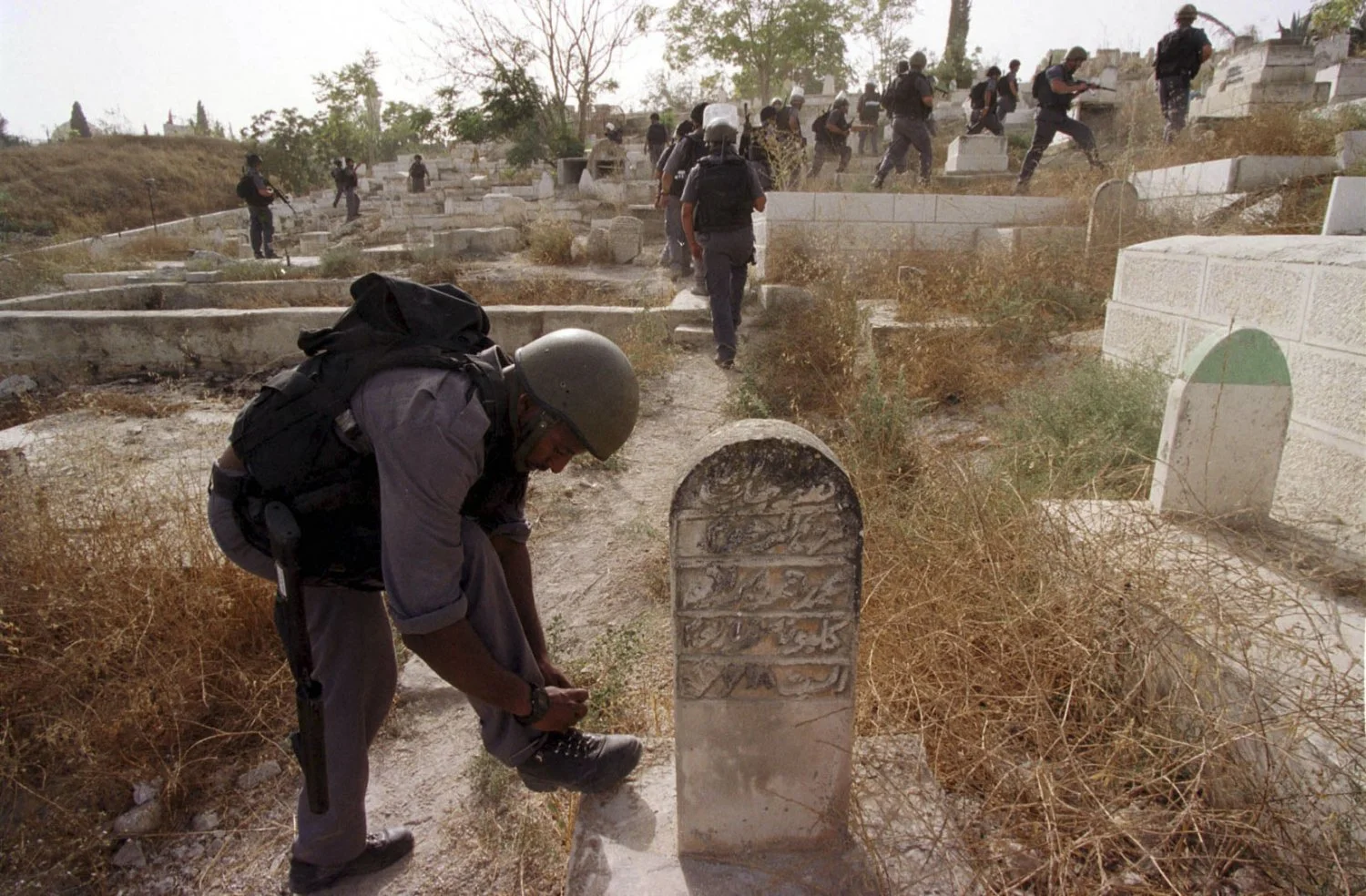
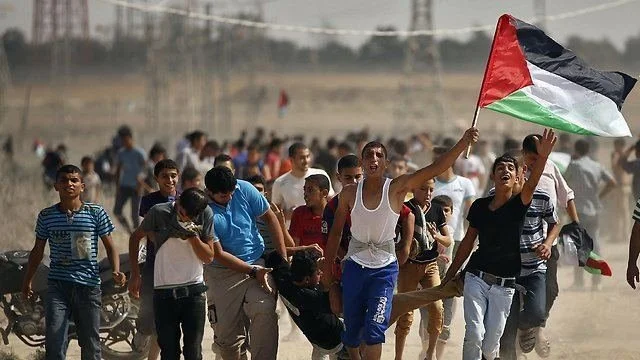
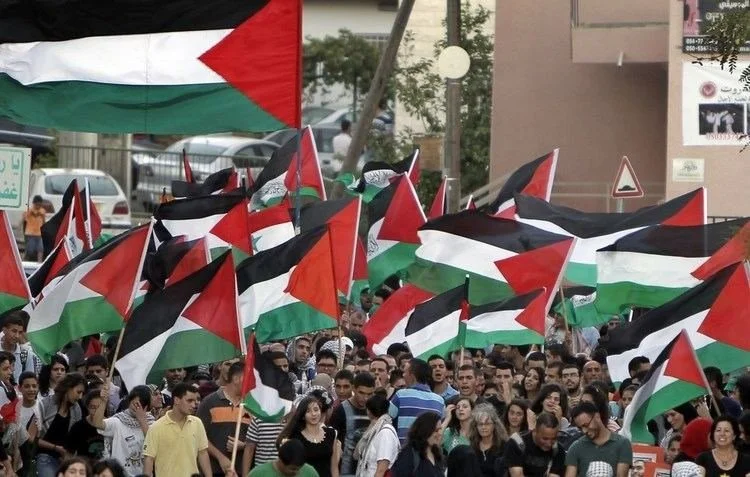
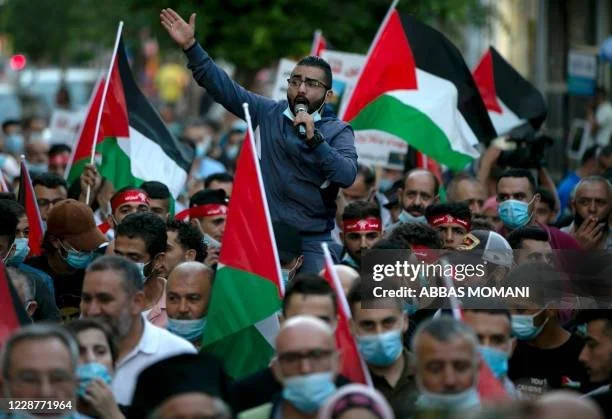
-
After Hamas took control of Gaza in June 2007, Israel and Egypt imposed a total blockade — by land, sea, and air.
➡️ Gaza was cut off.
➡️ Trade, aid, and movement came under siege.
➡️ Exits were sealed. Supplies were rationed. Lives were restricted.The blockade turned Gaza into what many human rights groups have called “the world’s largest open-air prison.”
-
Land: Israel controls all crossings (except one).
Erez Crossing (with Israel): Heavily restricted; permits denied for many seeking medical treatment or education.
Rafah Crossing (with Egypt): Often closed or highly restricted; Egypt limits movement citing "security concerns."
Sea: Israel patrols Gaza’s coast, enforcing a naval blockade.
Fishing limits are often reduced to 3–6 nautical miles, crippling Gaza’s fishing industry.
Boats are routinely fired upon or seized.
Air: Gaza has no airport. Airspace is controlled by Israel. Drones frequently fly overhead.
What’s Restricted?
Fuel, electricity, and medical supplies are limited or delayed.
Construction materials like cement and steel are restricted.
Food and aid trucks often face long delays or denial of entry.
Exit permits for education, jobs, or medical emergencies are rare.
-
In 2006, Hamas won a majority in the Palestinian Legislative Council — through democratic elections.
They attempted to form a unity government with Fatah (the Palestinian Authority),
but the U.S., EU, Israel — and the PA itself — refused to recognise Hamas’s authority.Tensions escalated.
In June 2007, after months of infighting, Hamas took full control of Gaza. -
While often designated as a terrorist group, for many Palestinians, Hamas symbolised:
Armed resistance in the face of occupation
A refusal to accept siege, settlement, and fragmentation
Its rise reflected not just ideology — but frustration, loss, and the absence of International support and political progress.
2006-2007 Hamas elected - Siege begins


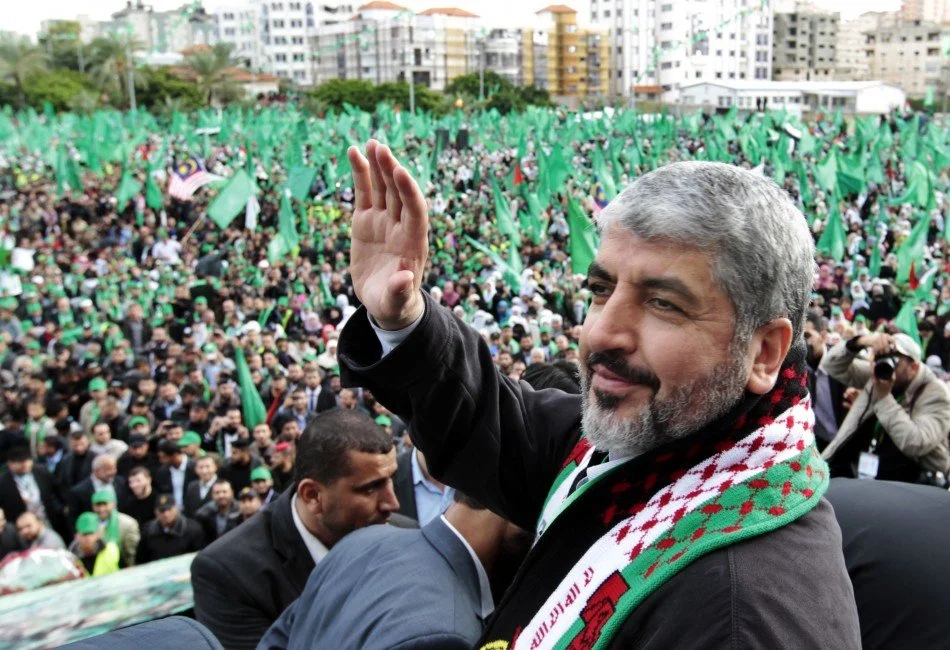
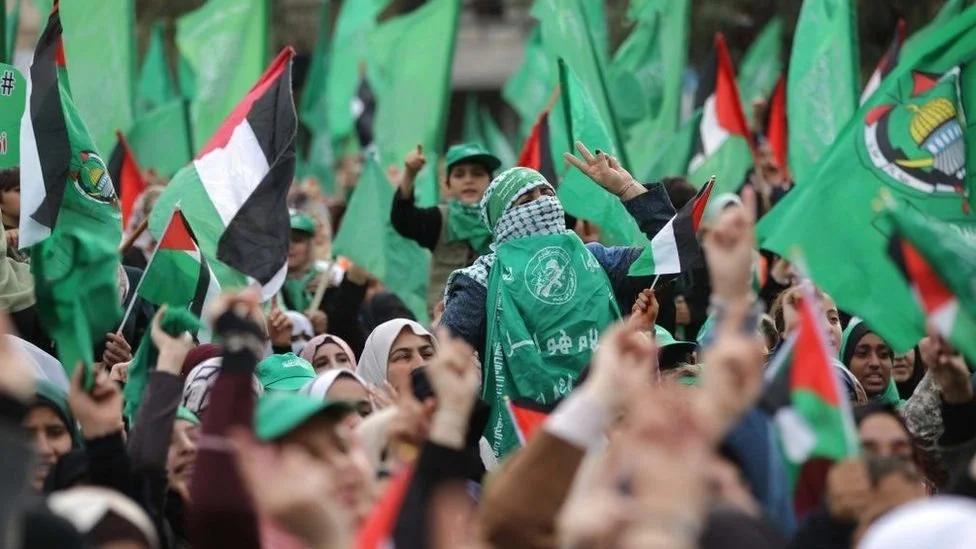
-
On 27 December 2008, Israel launched Operation Cast Lead — a massive 22-day assault on Gaza.
It began with airstrikes, followed by a ground invasion.
Israel said the goal was to stop rocket fire from Gaza.
But the scale of destruction shocked the world.Palestinians killed: ~1,383
Civilians: ~759
Children: ~318
Israelis killed: 13
Civilians: 3
Soldiers: 10
The war ended in January 2009 with a unilateral ceasefire — but no real change.
Gaza remained under siege.
The pattern was set: bombardment, pause, repeat. -
On 14 November 2012, Israel launched Operation Pillar of Defense with the assassination of Hamas military leader Ahmed al-Jabari.
Airstrikes followed across Gaza.
Rocket fire reached deeper into Israel than ever before.The war lasted 8 days.
170+ Palestinians killed — many were civilians
6 Israelis killed
Once again, there was no long-term political solution.
The siege continued. The cycle remained unbroken. -
On 8 July 2014, Israel launched Operation Protective Edge after rising tensions and the killing of three Israeli teens in the West Bank.
The war lasted 51 days — the deadliest round yet.
2,200+ Palestinians killed — most were civilians, including over 550 children
70+ Israelis killed — mostly soldiers
Massive destruction: homes, schools, hospitals, and entire neighbourhoods flattened
Over 100,000 Palestinians displaced
Israel said it aimed to stop rocket fire and destroy Hamas tunnels.
But the scale of destruction drew international outrage.A ceasefire was reached in late August — but the blockade remained.
Gaza was shattered. No peace followed.
2008-2014 Assault on Gaza



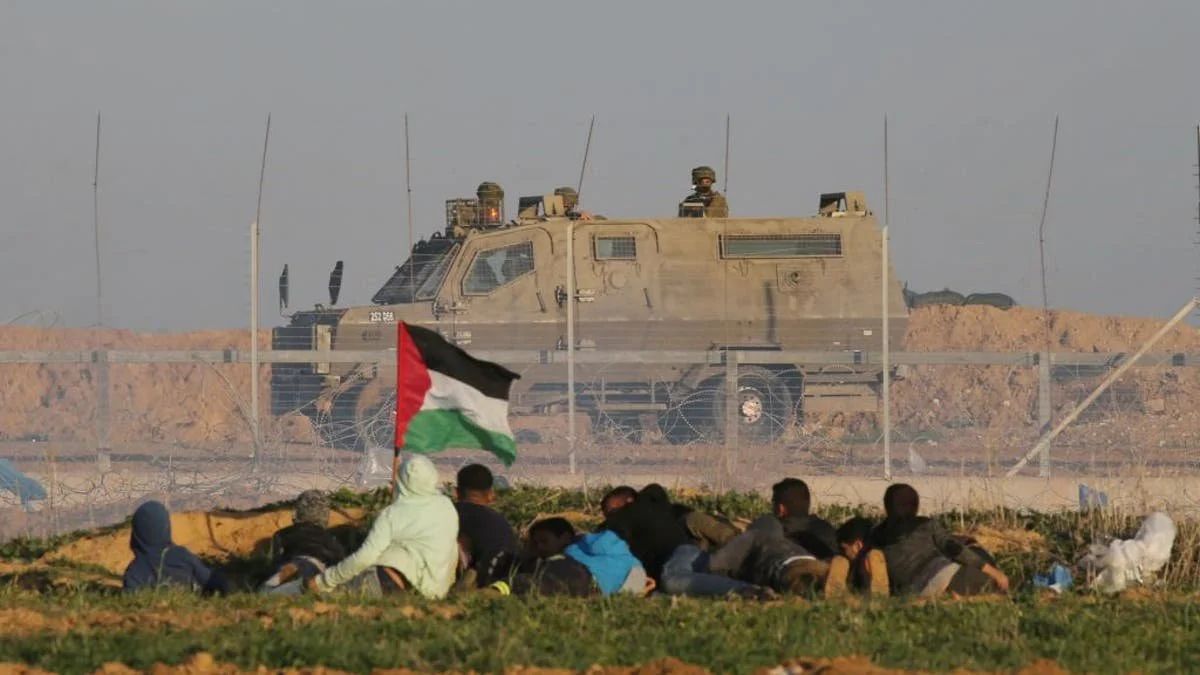
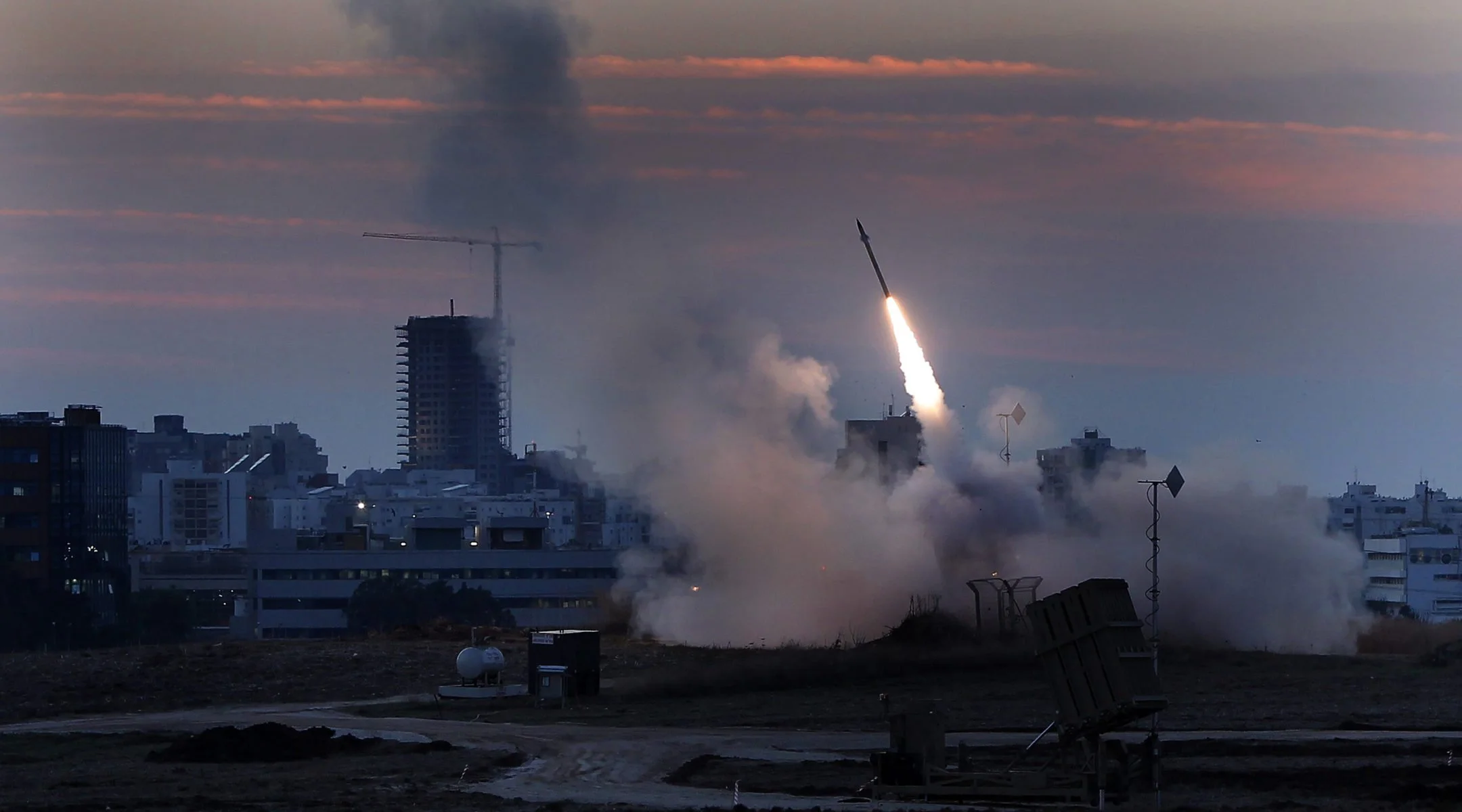
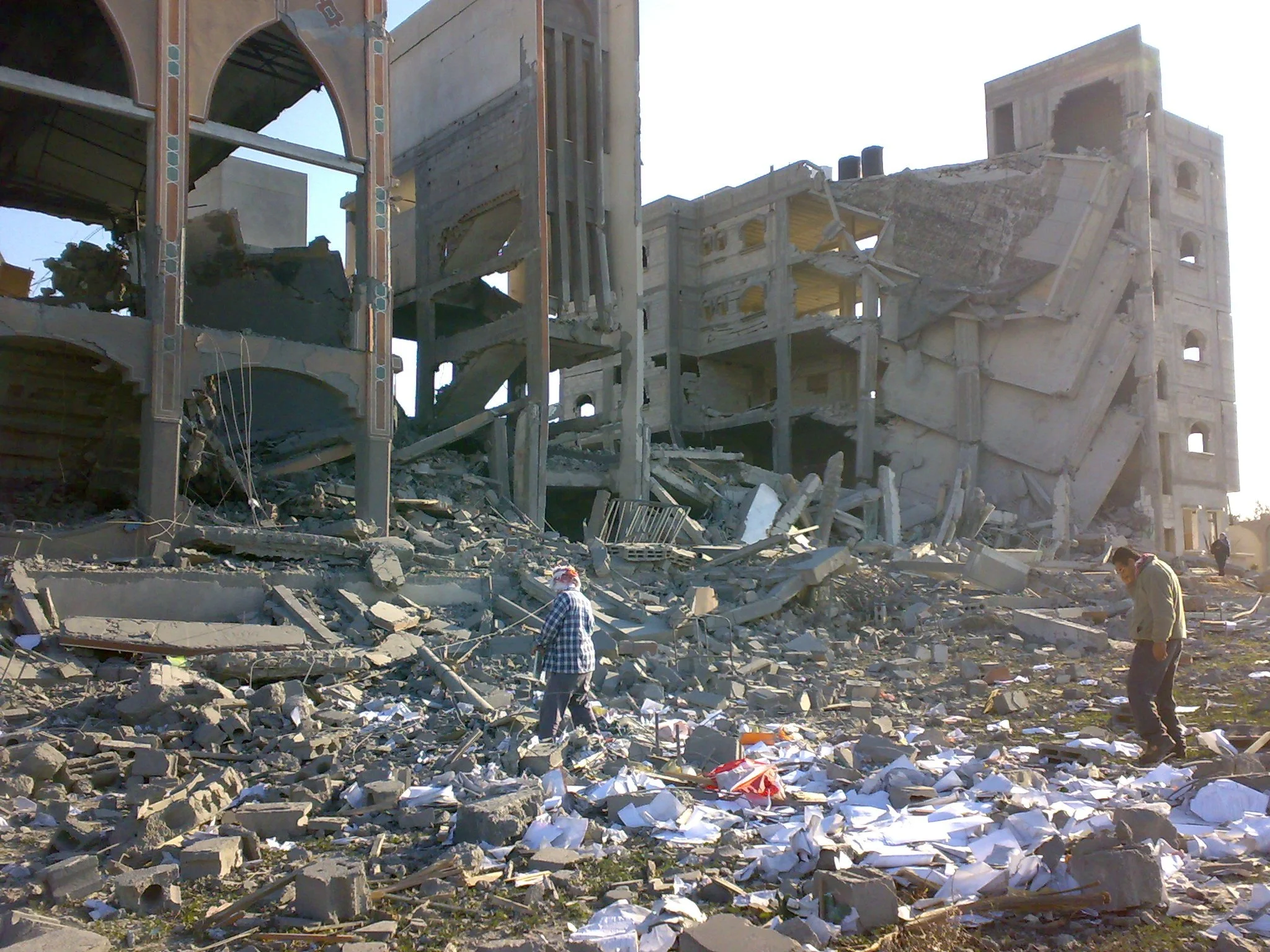


2015-2021 Surveillance, snipers, Gaza erupts again
-
By 2015, the Gaza blockade entered its 9th year — with no end in sight.
Electricity, medicine, clean water: all limited
Unemployment soared past 50%
Two million people were trapped, monitored, and increasingly cut off from the world
In the West Bank, Israel expanded its use of surveillance tech:
Facial recognition, phone tracking, and biometric databases
Palestinian cities became testing grounds for military-grade tech
-
In March 2018, Palestinians in Gaza launched weekly protests at the fence, demanding:
An end to the siege
The right of return for refugees expelled in 1948
Israel responded with live sniper fire.
Over 200 Palestinians killed, including paramedics, journalists, and children
Thousands injured, many with life-altering wounds
The world watched. Few acted..
-
In May 2021, tensions in occupied East Jerusalem exploded.
➡️ Israeli forces raided Al-Aqsa Mosque during Ramadan
➡️ Palestinians faced forced evictions in Sheikh JarrahIn response, Hamas fired rockets from Gaza.
Israel launched airstrikes — unleashing 11 days of heavy bombardment.260+ Palestinians killed, including 67 children
13 people killed in Israel
Towers, homes, and media offices were destroyed
Thousands displaced — again
Across historic Palestine, protests erupted in cities and towns — a rare moment of unity.
A ceasefire was declared on 21 May.
But the core issues — occupation, blockade, and dispossession — remained untouched.

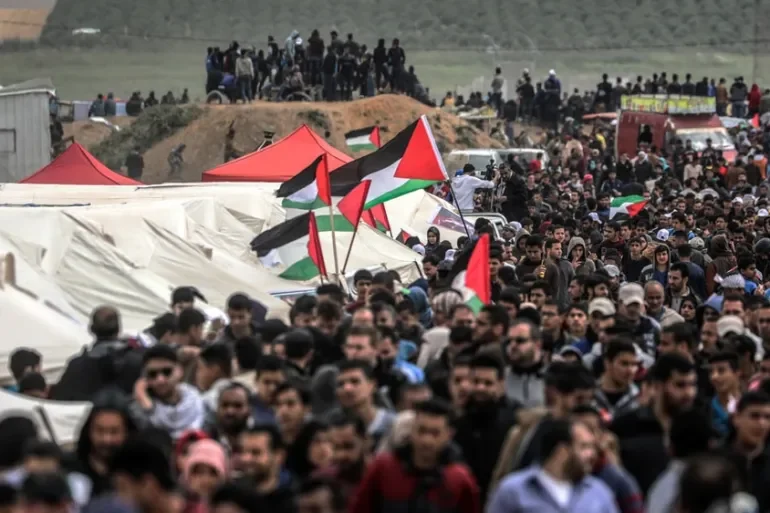


-
In late 2022, Israel’s most far-right government in history came to power — led by Benjamin Netanyahu, with extremist ministers like Itamar Ben-Gvir and Bezalel Smotrich.
They openly promoted annexation, settlement expansion, and crackdowns on Palestinians.
Some ministers had histories of incitement and ties to violent settler groups. -
In the West Bank, settler violence surged — often under the protection or inaction of the Israeli military.
2022
151 Palestinians killed in the West Bank
Over 9,000 injured, many during Israeli raids and protests
Settlers Violence (2022)
Vandalism & Arson:
Over 1,300 settler attacks documented
Includes the burning of homes, mosques, and vehicles
Hundreds of olive trees and farmlands destroyed
Displacement:
At least 16 Palestinian communities were forcibly displaced due to settler violence and military pressure
Most violent year on record for settler attacks since OCHA began documenting them in 2006
-
Al Jazeera journalist Shireen Abu Akleh was killed by Israeli forces in May 2022 while reporting — no accountability followed.
2022 Netanyahu elected, settler violence spikes



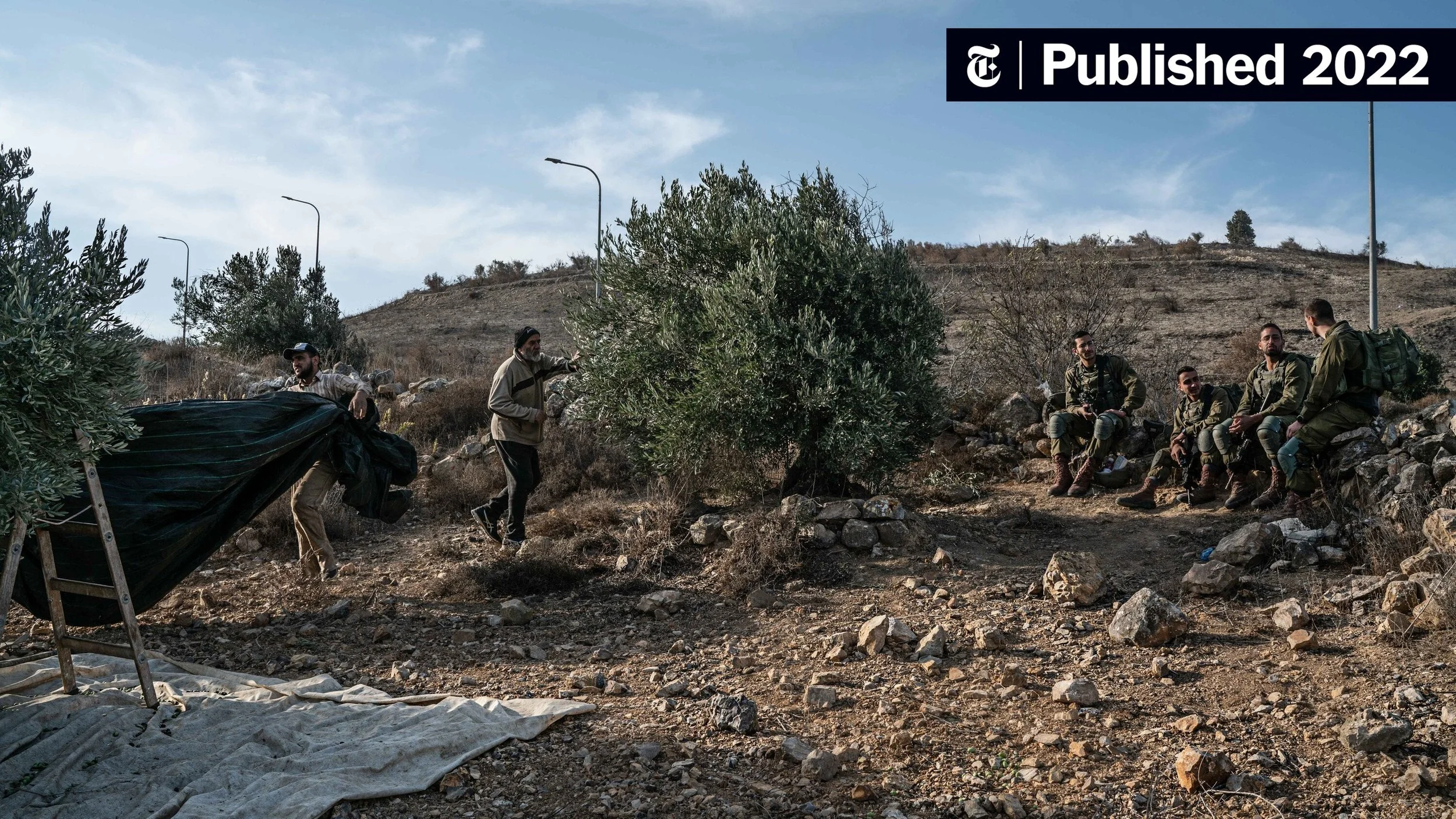
-
Throughout 2023, Israeli police repeatedly raided Al-Aqsa Mosque in occupied East Jerusalem — often during Ramadan.
Worshippers were beaten and arrested
Live footage of assaults inside the mosque sparked outrage
Protests spread across Gaza, the West Bank, and Palestinian communities in Israel
For many Palestinians, these raids were more than provocation — they were a symbol of deepening occupation and humiliation.
-
Life under siege worsened. International media moved on.
Gaza remained sealed. Israel tightened restrictions on goods and movement.
Settlement expansion surged.
Palestinian journalists, medics, and civilians were repeatedly targeted.
Censorship and algorithmic suppression of Palestinian voices online became part of the narrative
-
On 7 October 2023, Hamas launched a surprise, coordinated attack from Gaza into southern Israel.
1,200 people killed in Israel — civilians, soldiers, and foreign nationals
Hundreds taken hostage, including women and children
Israeli defences were overwhelmed for hours
Israel responded with full-scale war.
Launched airstrikes across Gaza
Cut off electricity, water, fuel, and food
Declared a “total siege”
-
A humanitarian collapse followed the war.
The world watched — divided, stunned, and uncertain.By the end of 2023:
20,000+ Palestinians killed
Thousands of children among the dead
Mass displacement: over 85% of Gaza’s population
Entire neighbourhoods destroyed
2023 Catastrophic War begins




2024 Gaza - A documented genocide
-
ICJ: Genocide Case Against Israel
In December 2023, South Africa filed a case at the International Court of Justice (ICJ), accusing Israel of violating the Genocide Convention during its war on Gaza.
26 January 2024 — The ICJ issued provisional measures, ordering Israel to:
• Prevent genocidal acts
• Allow humanitarian aid into GazaMarch & May 2024 — The ICJ reaffirmed urgent aid access.
22 October 2025 — ICJ issued an Advisory Opinion:
• Declared the occupation unlawful
• Urged Israel to ensure UN humanitarian access, especially for UNRWA
• Reinforced Israel’s obligations as an occupying power
Israel rejected the ruling — but the legal pressure grew.
ICC: Arrest Warrants for Leaders
On 20 May 2024, the International Criminal Court (ICC) took a historic step.
Prosecutor Karim Khan announced he had requested arrest warrants for:
Benjamin Netanyahu – Israeli Prime Minister
Yoav Gallant – Israeli Defence Minister
Yahya Sinwar, Ismail Haniyeh, and Mohammed Deif – Senior Hamas leaders
🔻 Charges included:
Israel: Starvation as a method of war, extermination, attacks on civilians
Hamas: Murder, hostage-taking, rape, crimes against civilians on 7 Oct
This is the first time the ICC pursued leaders of both a state and non-state actor in an ongoing conflict.
Israel rejects the ruling.
Sources:
International Court of Justice (ICJ) official site:
Case overview: https://www.icj-cij.org/case/192
Orders of provisional measures: https://www.icj-cij.org/public/files/case-related/192/192-20240126-ORD-01-00-EN.pdf
-
According to Al Jazeera (Dec 2024) and humanitarian sources:
38,000+ Palestinians killed, mostly civilians
87,000+ wounded
Infrastructure decimated — homes, schools, hospitals
Fuel, food, water, and medical supplies blocked
Doctors, journalists, and aid workers among the dead
International aid and press access restricted
Described as:
“The most documented destruction of a population in real time.”
-
On May 5, 2024, Israel banned Al Jazeera from operating within its borders — revoking press credentials, seizing equipment, closing offices, and blocking broadcasts and websites.
Prime Minister Netanyahu accused the network of being a "mouthpiece for Hamas," while Al Jazeera called the ban a violation of press freedom.Meanwhile, journalists on the ground faced deadly risks.
By the end of 2024, over 100 journalists — mostly Palestinian — had been killed in Gaza, making it one of the deadliest years for media workers in recent history.🔻 Human rights groups and media watchdogs condemned the actions as part of a broader campaign to silence witnesses, control the narrative, and block international scrutiny.
-
Israel began inviting social media influencers and content creators, particularly from the U.S. and Europe, in late 2023 and into 2024, as part of a broader public diplomacy campaign during and after the outbreak of the Gaza war on October 7, 2023.
Key Details:
October–November 2023: After the Hamas attack and the start of Israel’s military response, Israel’s Foreign Ministry and various pro-Israel advocacy groups started coordinating trips for influencers to visit the sites of the October 7 attacks (especially the Nova music festival) and meet with victims' families.
Influencers were often given guided access, encouraged to post sympathetic content, and present Israel’s narrative on platforms like Instagram, TikTok, and YouTube.
This strategic use of digital creators aimed to counter criticism of Israel’s military actions in Gaza and shape global public opinion, particularly among younger, online audiences.
Digital rights groups such as 7amleh and Access Now have documented the censorship of Palestinian voices online. Meta (Facebook/Instagram), X (Twitter), and TikTok are accused of using algorithmic to suppress Palestinian voices, Palestinian content; Remove or shadow-ban posts; Disproportionately apply content moderation policies.
Foreign media often blocked from entering Gaza.
Palestinian journalists have been killed or targeted in record numbers.
Gaza became “the most dangerous place in the world to be a journalist” (Reporters Without Borders, 2024)
-
May 2024 – ICC issues arrest warrants for:
Israeli PM Benjamin Netanyahu
Former Defense Minister Yoav Gallant
Hamas leaders Yahya Sinwar, Mohammed Deif, and Ismail Haniyeh
All are accused of war crimes and crimes against humanity during the Gaza conflict.
Sources:
BBC News: https://www.bbc.com/news/world-middle-east-69005358
The Guardian: https://www.theguardian.com/world/2024/may/20/icc-prosecutor-seeks-arrest-warrants-netanyahu-gallant-hamas-leaders
ICC official press release: https://www.icc-cpi.int/news/icc-prosecutor-applies-arrest-warrants-situation-state-palestine

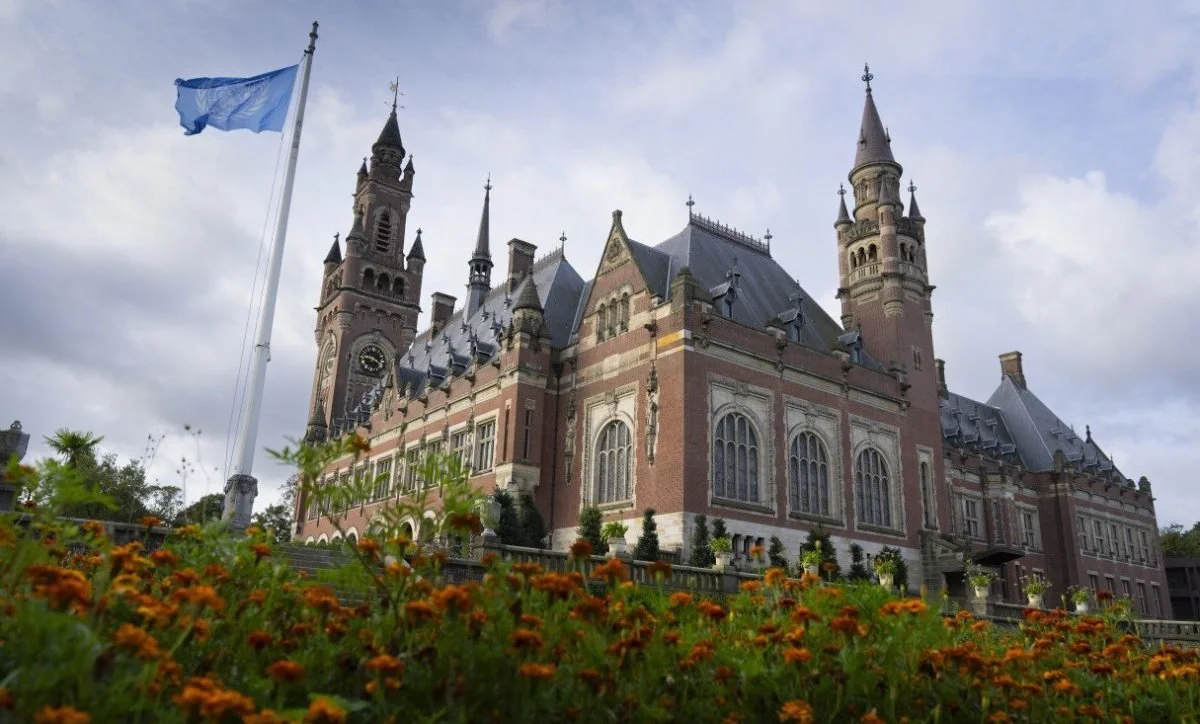

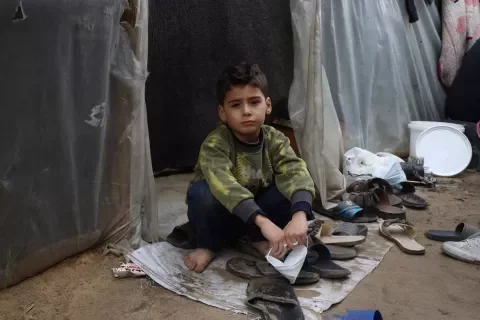


2025 Genocide unfolding before our eyes
-
According to Human Rights Watch and Doctors Without Borders (MSF) (2025 reports), aid distribution points inside Gaza were relocated closer to Israeli-controlled zones. Multiple incidents of sniper fire targeting civilians — including women and children — queuing for food and water were documented.
• MSF reported the systematic killing of people waiting in line for food in northern Gaza, calling it "a strategy of starvation."
• Amnesty International labelled the practice deliberate and unlawful, potentially constituting a war crime .. -
Israel’s role in controlling aid distribution was denounced by international observers:
• UN Special Rapporteurs condemned the reduction of access points, accusing Israel of using starvation as a weapon of war.
• Aid convoys were frequently delayed or redirected, and Israel restricted which NGOs could enter Gaza, slowing humanitarian relief . -
Multiple international NGOs, including Médecins Sans Frontières and International Rescue Committee, reported the deaths of medical staff in targeted strikes.
• A joint UN report confirmed at least 24 international medical workers killed between January and August 2025, many while working in or near field hospitals. -
Whistleblower reports emerged from former contractors alleging US-funded units embedded with Israeli forces had been ordered to suppress all resistance — some whistleblowers refused to shoot civilians, later leaking footage to European news outlets.
• The Guardian and Al Jazeera published segments featuring anonymous US and UK military advisors raising alarms about rules of engagement that included children.
• UNHRC called for a formal investigation into these claims, currently under review . -
The World Food Programme (WFP) and FAO issued Level 5 famine alerts in Gaza by July 2025.
• As of mid-2025, 1 in 3 children under 5 in Gaza were acutely malnourished.
• Israel’s ongoing restrictions on aid entry were directly linked to famine conditions, according to a UN Human Rights Council report titled “Famine by Design.” -
Sources: UN OCHA, WHO, Aljazeera and independent human rights monitors
Gaza mid-2025
Palestinian deaths: ~50,000+
(including at least 17,500 children and over 9,500 women)Injured: Over 85,000
Missing (presumed dead under rubble): 8,000+
Healthcare workers killed: 400+
Journalists killed: 100+
UN personnel killed: 150+
Israeli government has revoked foreign press credentials, raided local news agencies, and restricted war coverage
Israel (7 Oct 2023 – mid-2025):
Israeli deaths (mostly on 7 Oct 2023): ~1,200
(including civilians and military personnel)Hostages taken by Hamas (initially): 250
(Roughly half were later released in prisoner exchanges)
SOURCES
-
The Sykes–Picot Agreement (1916) — Avalon Project, Yale Law School
https://avalon.law.yale.edu/20th_century/sykes.aspInteractive Map: Sykes–Picot – 100 Years On — Al Jazeera (2016)
https://interactive.aljazeera.com/aje/2016/sykes-picot-100-years-middle-east-map/index.htmlThe Balfour Declaration (1917) — UK National Archives
https://www.nationalarchives.gov.uk/education/resources/the-balfour-declarationLeague of Nations Mandate for Palestine (1922) — Avalon Project
https://avalon.law.yale.edu/20th_century/palmanda.asp
-
UNISPAL: Origins and Evolution of the Palestine Problem — https://www.un.org/unispal/history2/origins-and-evolution-of-the-palestine-problem
UNRIC Database: Question of Palestine — https://unric.org/en/info-point-library/online-databases/question-of-palestine
UN Digital Library: Resolution 242 (1967) — https://digitallibrary.un.org/record/90717
UN News (Jan 2024): ICJ Orders Israel to Prevent Genocidal Acts in Gaza — https://news.un.org/en/story/2024/01/1147557
UNISPAL / ICJ Cases — https://www.un.org/unispal/icj-and-question-of-palestine
International Court of Justice (ICJ): South Africa v. Israel (Genocide Convention) — https://www.icj-cij.org/case/192
Orders of Provisional Measures (26 Jan 2024) — https://www.icj-cij.org/public/files/case-related/192/192-20240126-ORD-01-00-EN.pdf
-
International Criminal Court: Application for Arrest Warrants – Situation in the State of Palestine (May 2024) — https://www.icc-cpi.int/news/icc-prosecutor-applies-arrest-warrants-situation-state-palestine
Human Rights Watch (May 2024): ICC Seeks Arrest Warrants for Netanyahu and Hamas Leaders — https://www.hrw.org/news/2024/05/20/icc-seeks-arrest-warrants-netanyahu-hamas-leaders
The Guardian (May 2024): ICC prosecutor seeks arrest warrants for Israeli, Hamas leaders — https://www.theguardian.com/world/2024/may/20/icc-prosecutor-seeks-arrest-warrants-netanyahu-gallant-hamas-leaders
BBC News (May 2024): ICC seeks arrest warrants for Israel and Hamas leaders — https://www.bbc.com/news/world-middle-east-69005358
-
Nakba Day: For Palestinians, Not Just a Historical Event — Al Jazeera (2020)
https://www.aljazeera.com/news/2020/5/15/nakba-day-for-palestinians-not-just-an-historical-eventUNRWA: History and Refugee Crisis (1948–Today) — https://www.unrwa.org/who-we-are
-
The Ramadan War: A Surprise Assault That Transformed the Middle East — Al Jazeera (2023)
https://www.aljazeera.com/gallery/2023/10/2/the-ramadan-war-a-surprise-assault-that-transformed-the-middle-eastUN Security Council Resolution 338 (1973) – Ceasefire After the Yom Kippur War — https://digitallibrary.un.org/record/203690
Six-Day War (1967) — Wikipedia
https://en.wikipedia.org/wiki/Six-Day_WarFirst Intifada Image Archive (Al Jazeera) — https://www.aljazeera.com/wp-content/uploads/2023/12/1-2-1702015896.png?resize=1920%2C1440
Amnesty International (1988): Human Rights Violations During the First Intifada — https://www.amnesty.org/en/documents/mde15/002/1988/en
The Second Intifada – 20 Years On — Al Jazeera (2020)
https://www.aljazeera.com/features/2020/9/29/the-second-intifada-20-years-on -
UN OCHA: Humanitarian Overview – Gaza Strip (2023) — https://www.ochaopt.org/content/humanitarian-overview-gaza-strip-2023
WHO Emergency Situation Reports – Occupied Palestinian Territory — https://www.who.int/emergencies/situations/opt
Presa Diretta – Gaza: La Guerra Invisibile (RAI, Roberto Iacona, 2024) — https://youtu.be/ZtECk-gz2lg
Gaza Humanitarian
-
Absentees’ Property Law (1950) — https://www.adalah.org/en/law/view/534
Law of Return (1950) — https://www.knesset.gov.il/laws/special/eng/return.htm
Citizenship (Nationality) Law (1952) — https://www.refworld.org/legal/legislation/natlegbod/1953/en/14615
UN Security Council Resolution 2334 (2016) — https://www.securitycouncilreport.org/un-documents/document/is-palestine-s-res-2334.php
-
Israel Welcomes Pro-Israel Influencers Amid Gaza War — Haaretz (Dec 2023)
https://www.haaretz.com/israel-news/2023-12-15/ty-article/.premium/israel-welcomes-pro-israel-influencers-amid-gaza-war/0000018f-abcdef123456Social Media Warriors – How Israel Recruited Influencers — The Guardian (Jan 2024)
https://www.theguardian.com/world/2024/jan/04/israel-social-media-influencers-gazaTikTok and Twitter Become Battlegrounds as Influencers Join Gaza–Israel Dispute — CNN (Nov 2023)
https://www.cnn.com/2023/11/20/middleeast/influencers-israel-gaza-social-media/index.htmlIsrael’s Digital War: The Rise of Influencer Diplomacy — Al Jazeera (Feb 2024)
https://www.aljazeera.com/news/2024/2/10/israel-social-media-influencers-digital-diplomacy